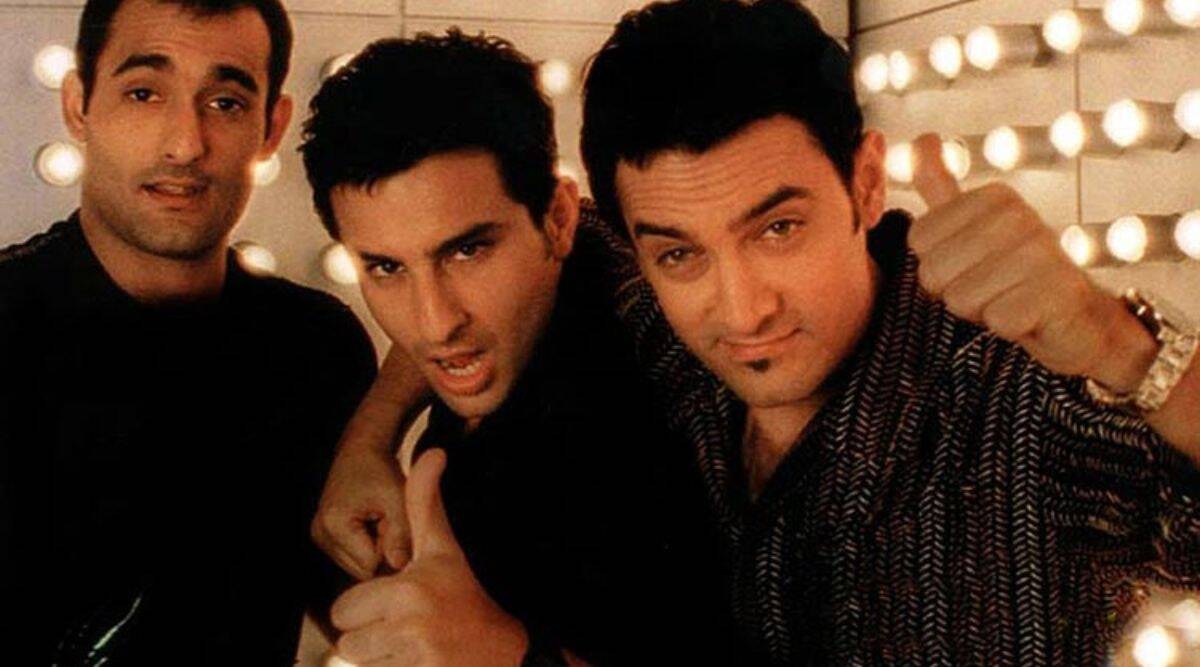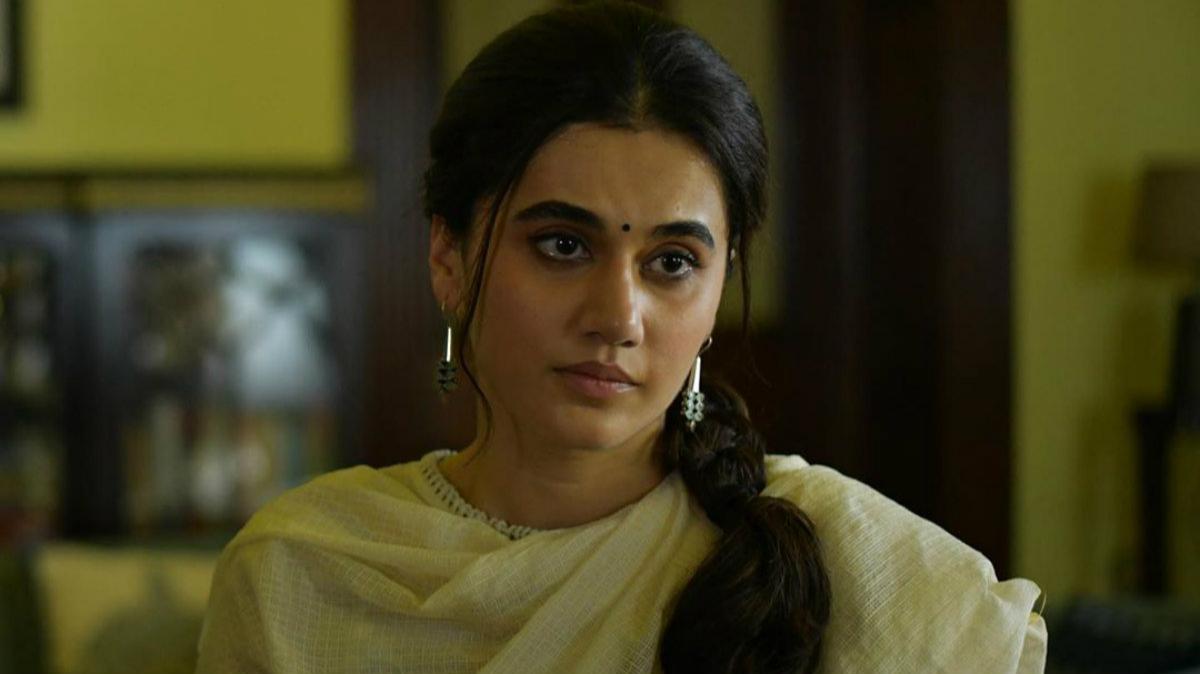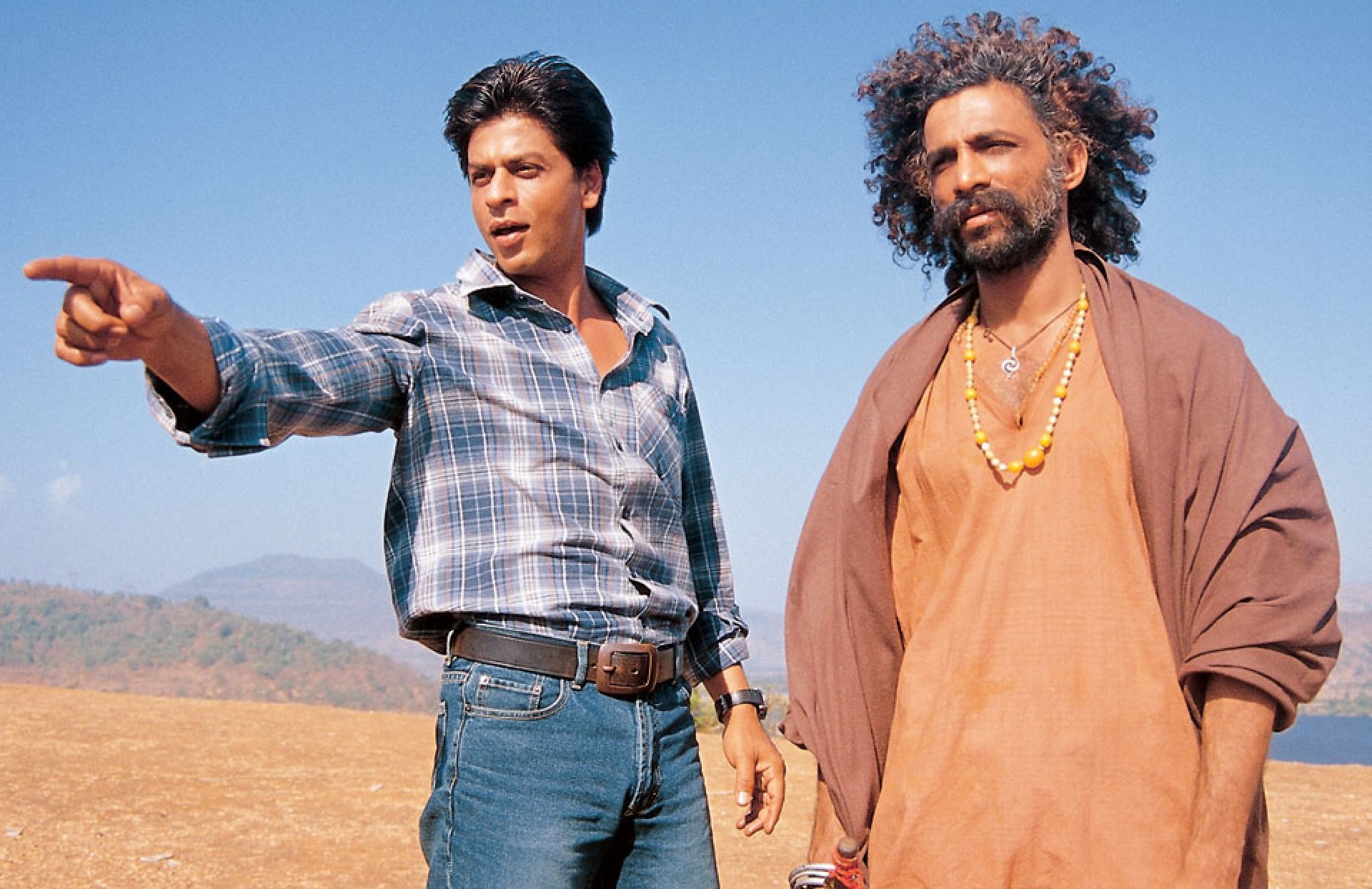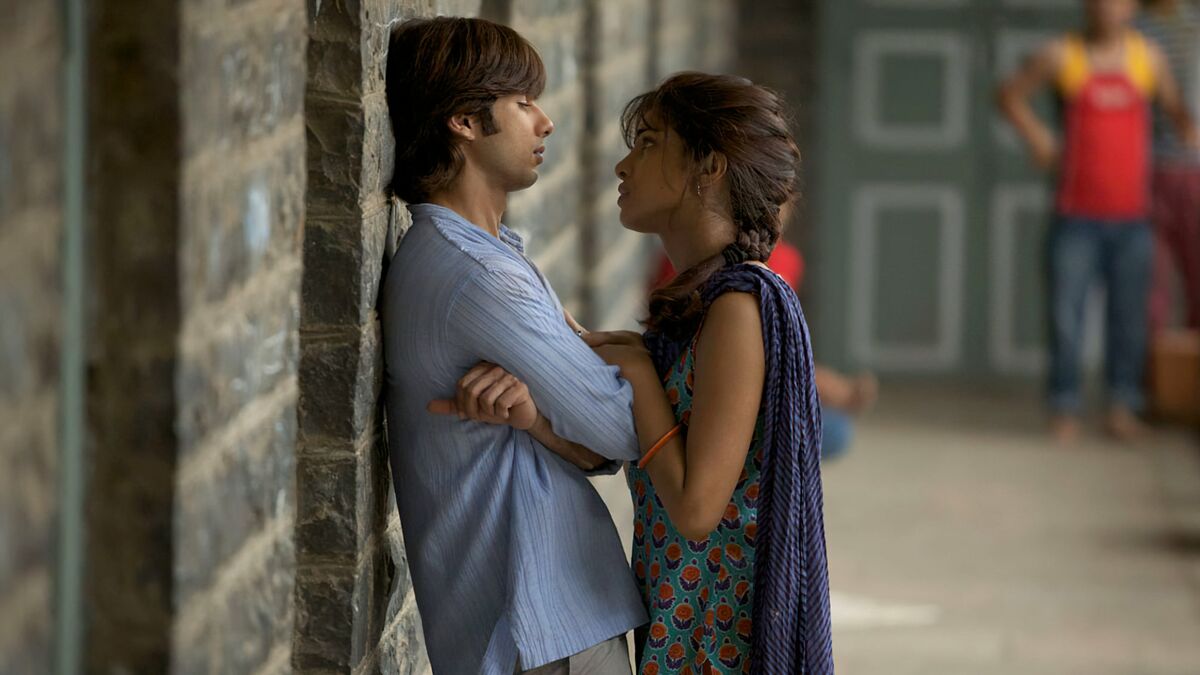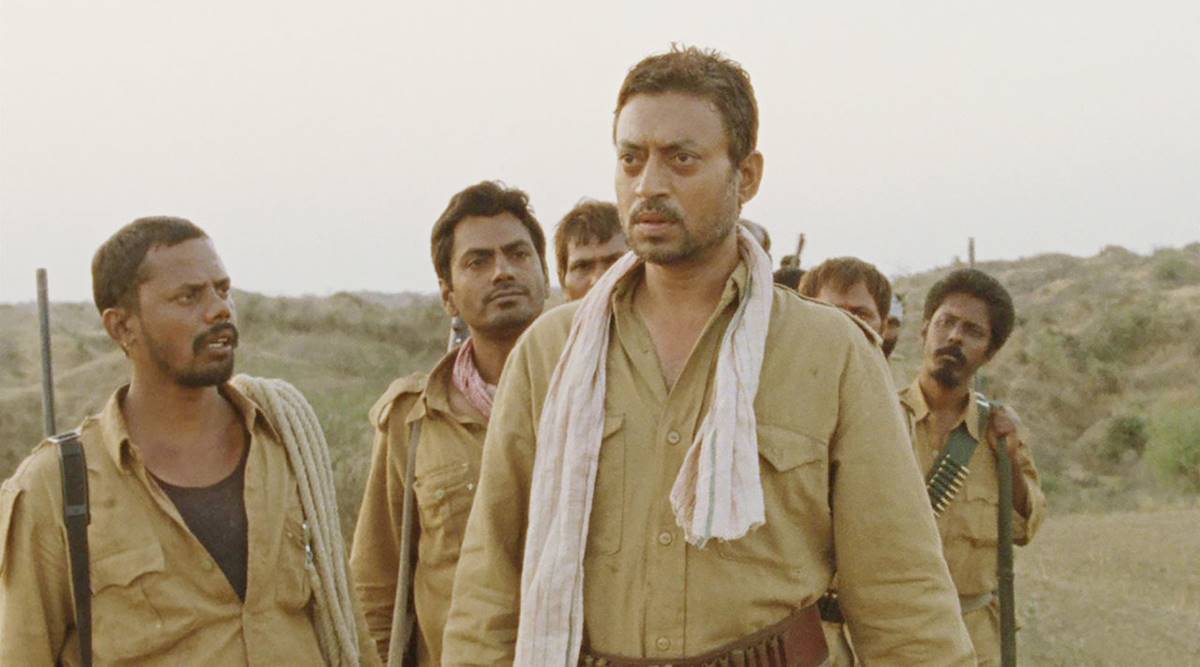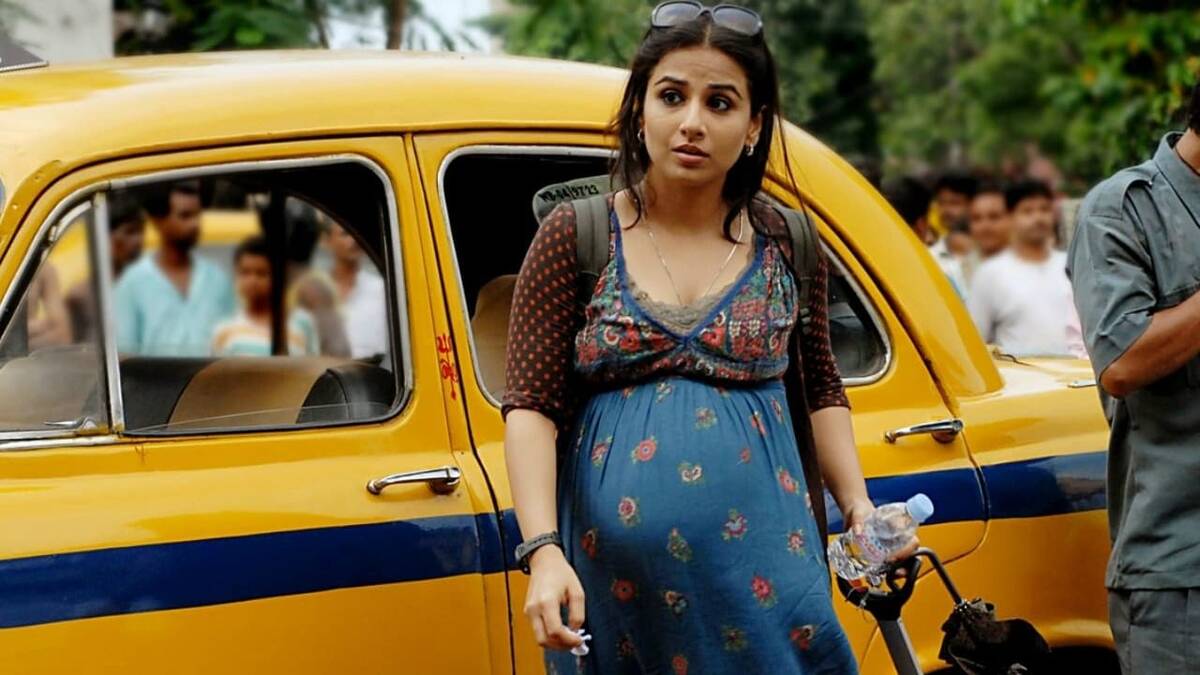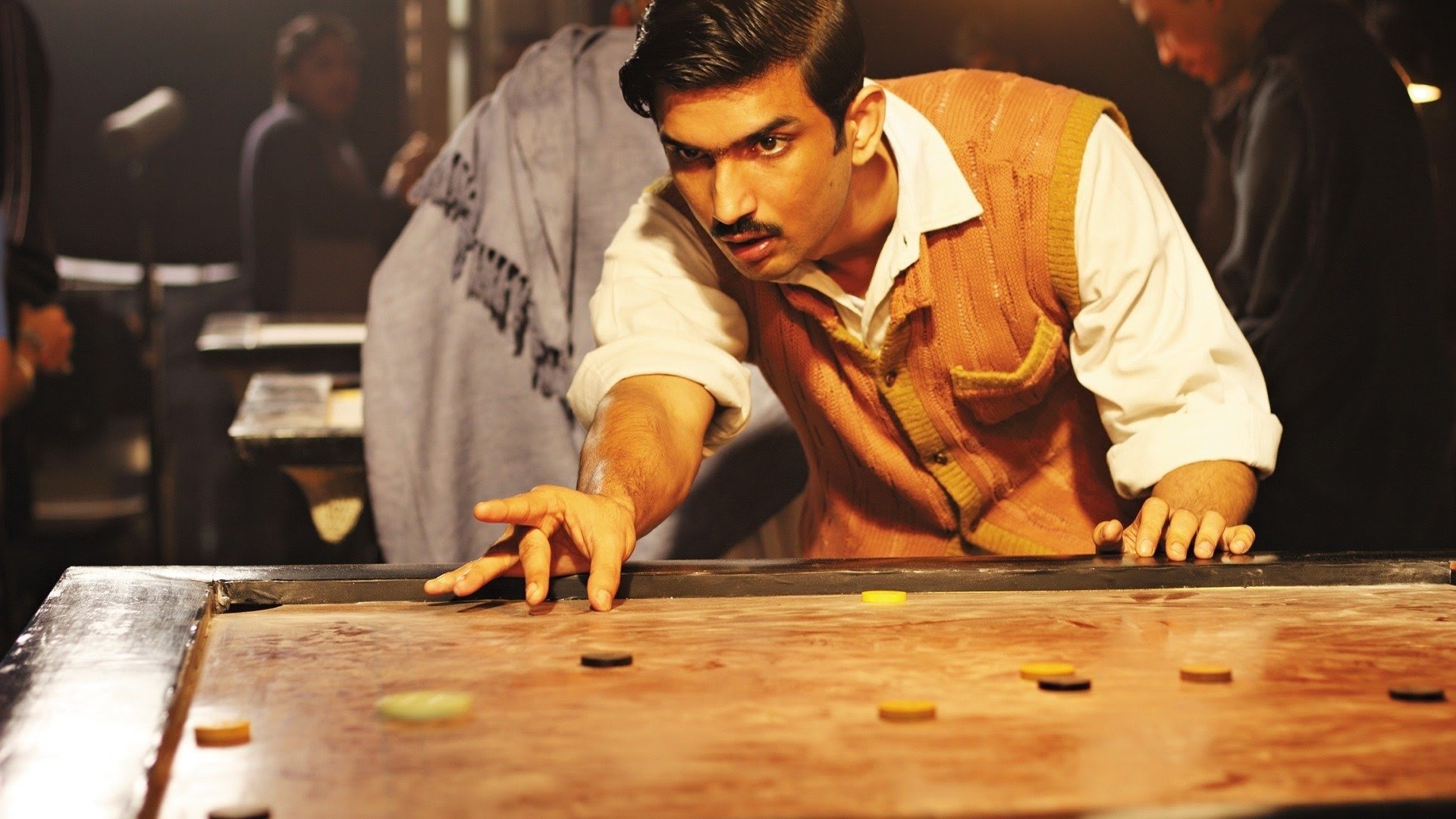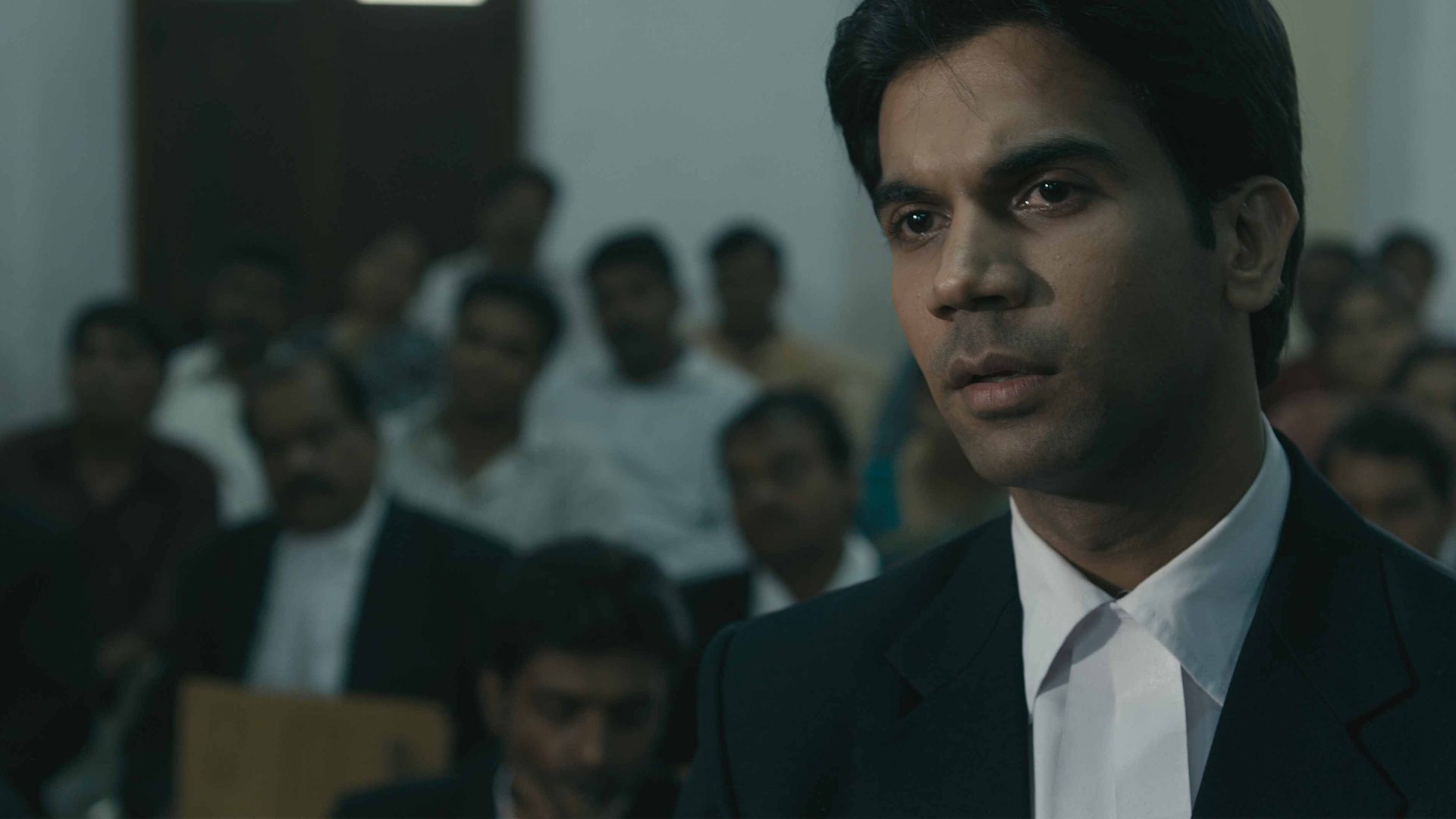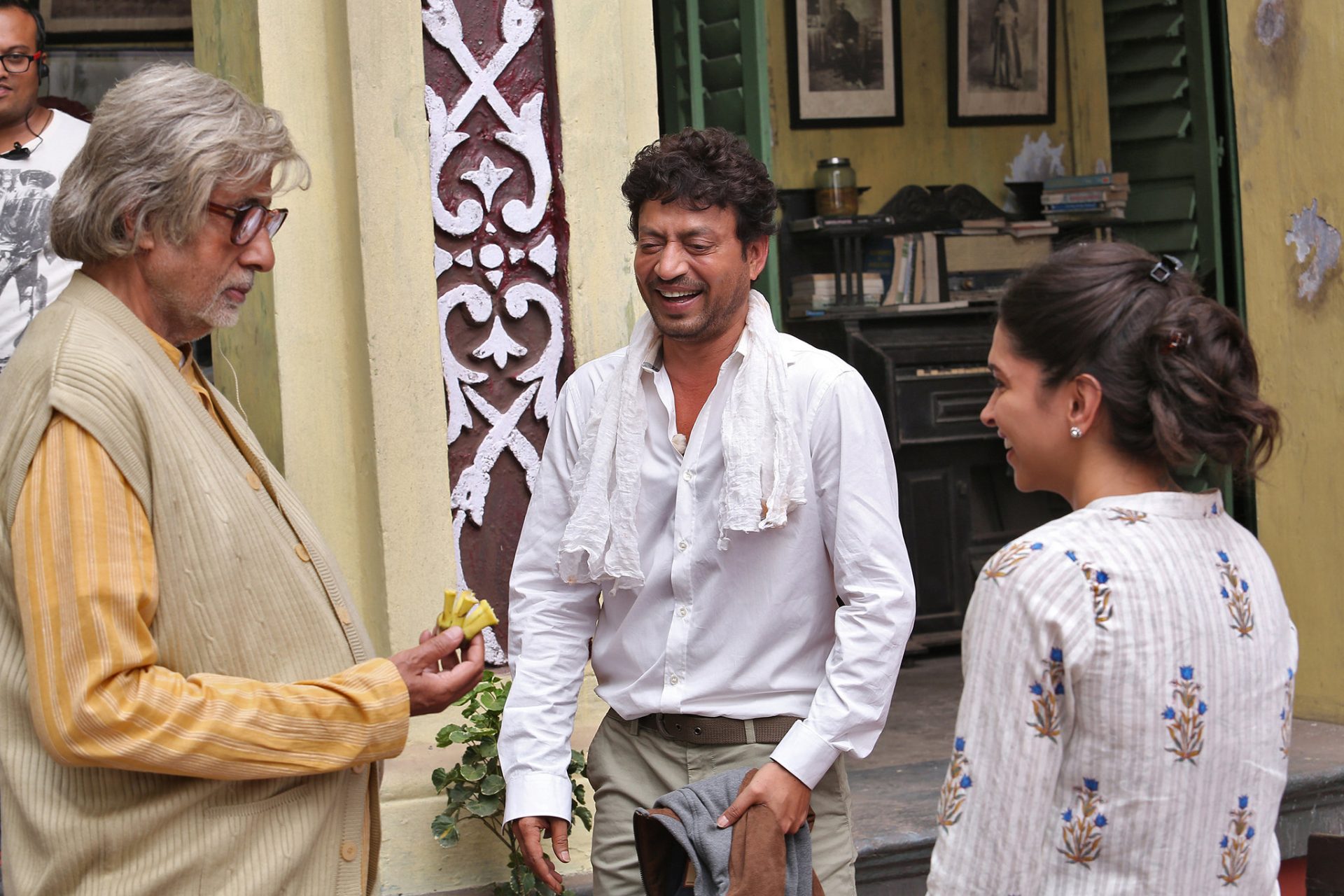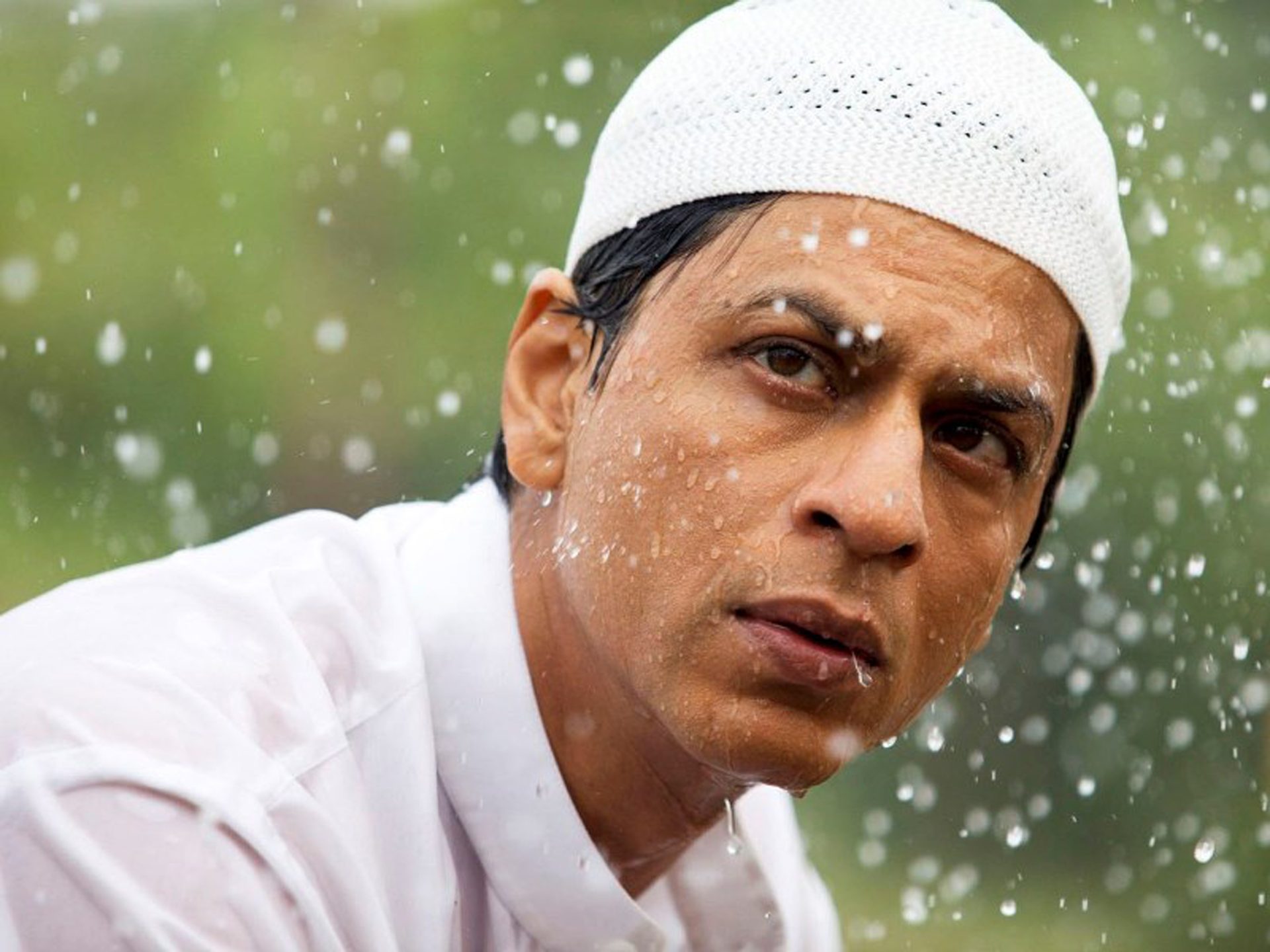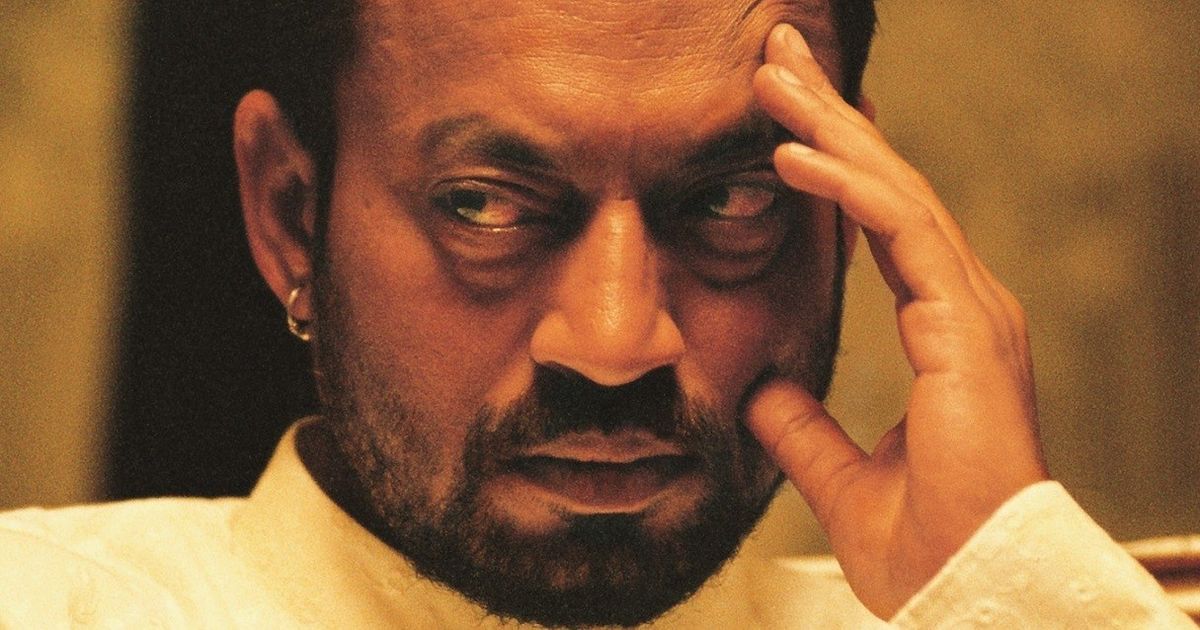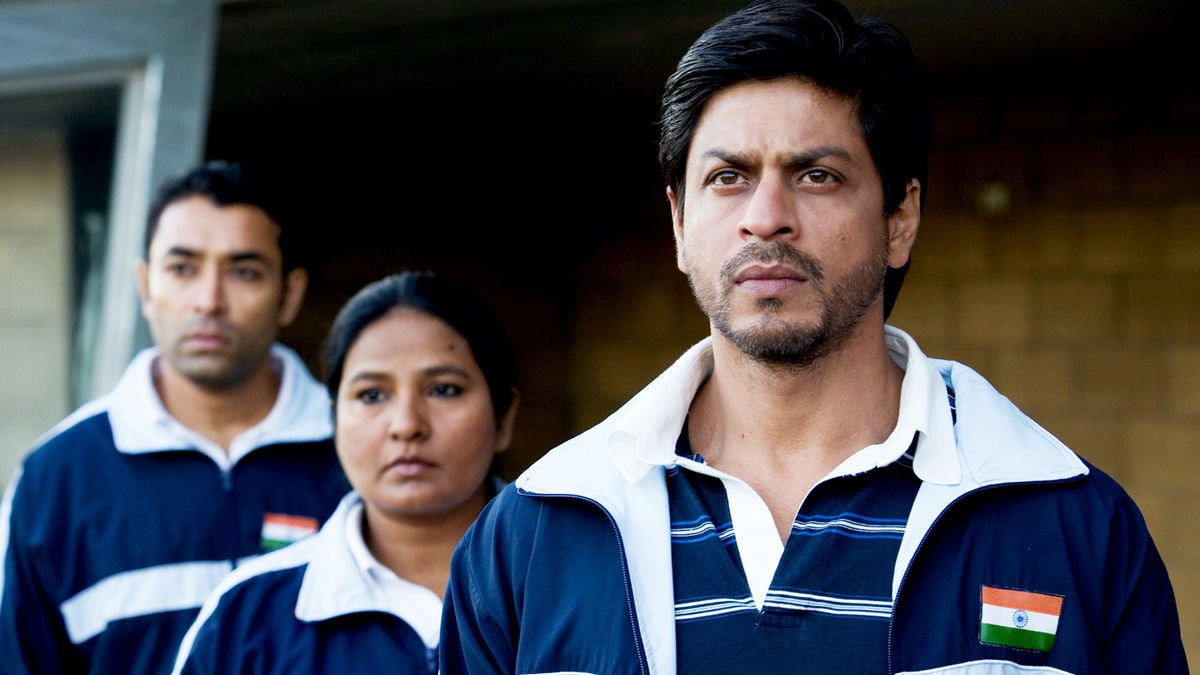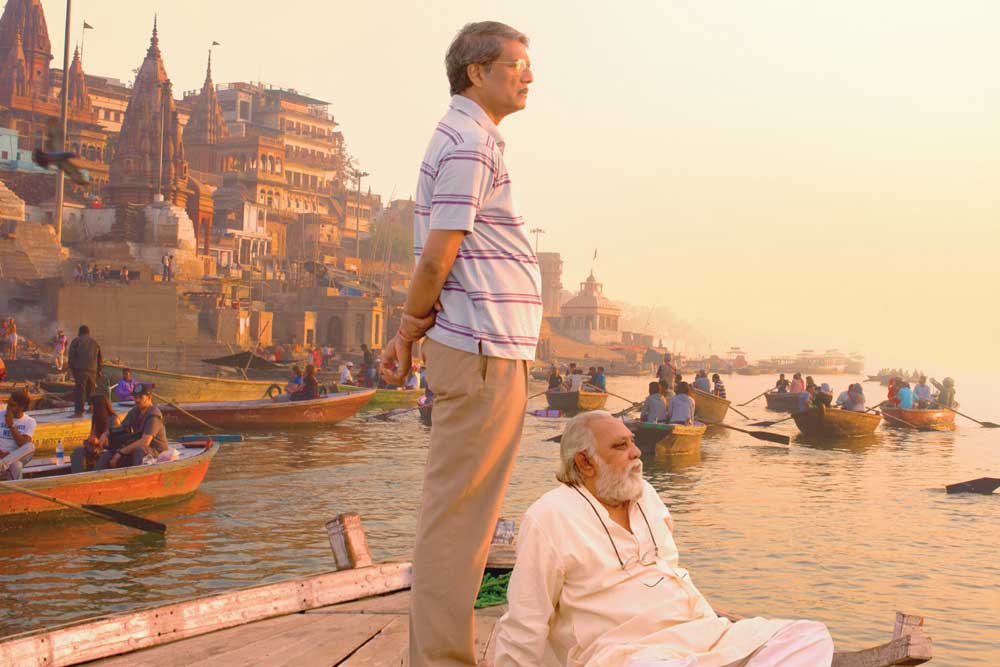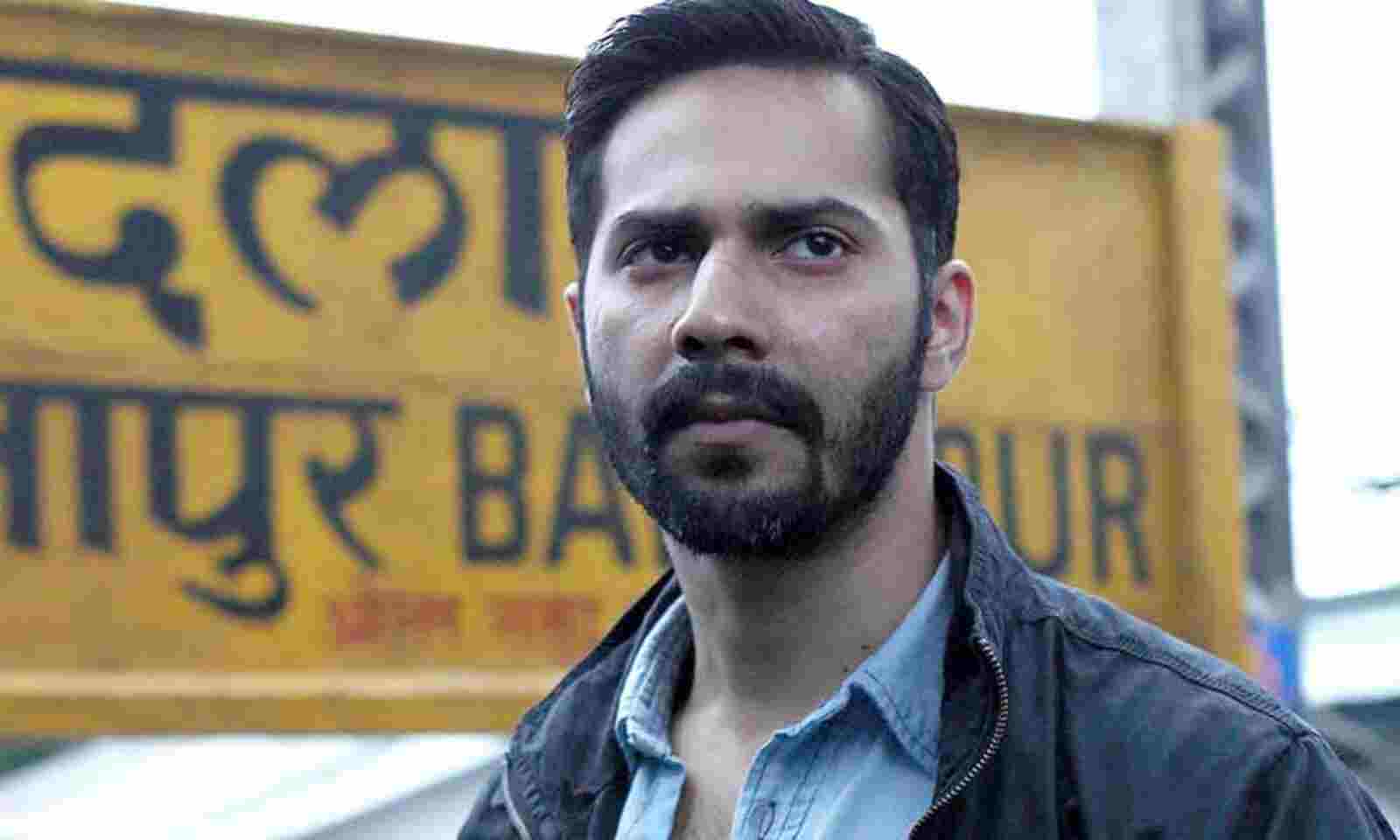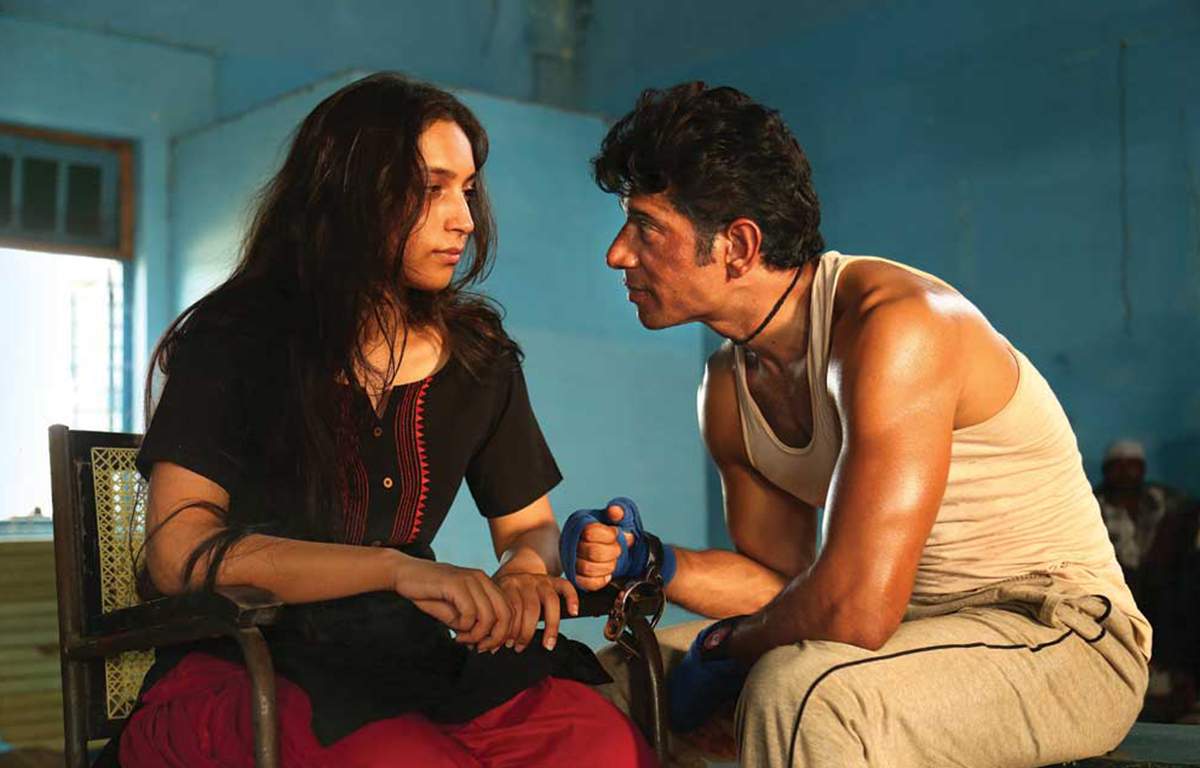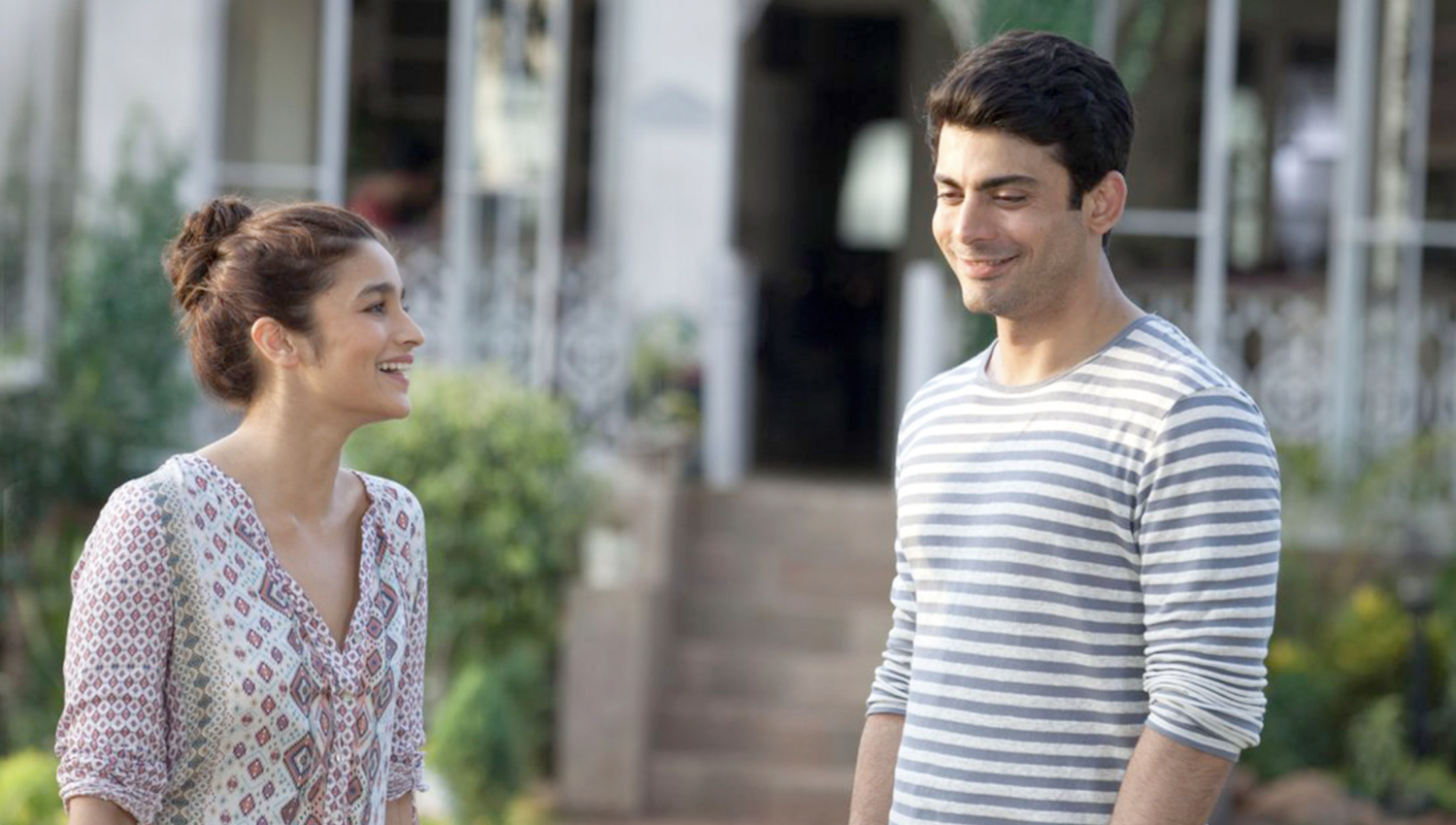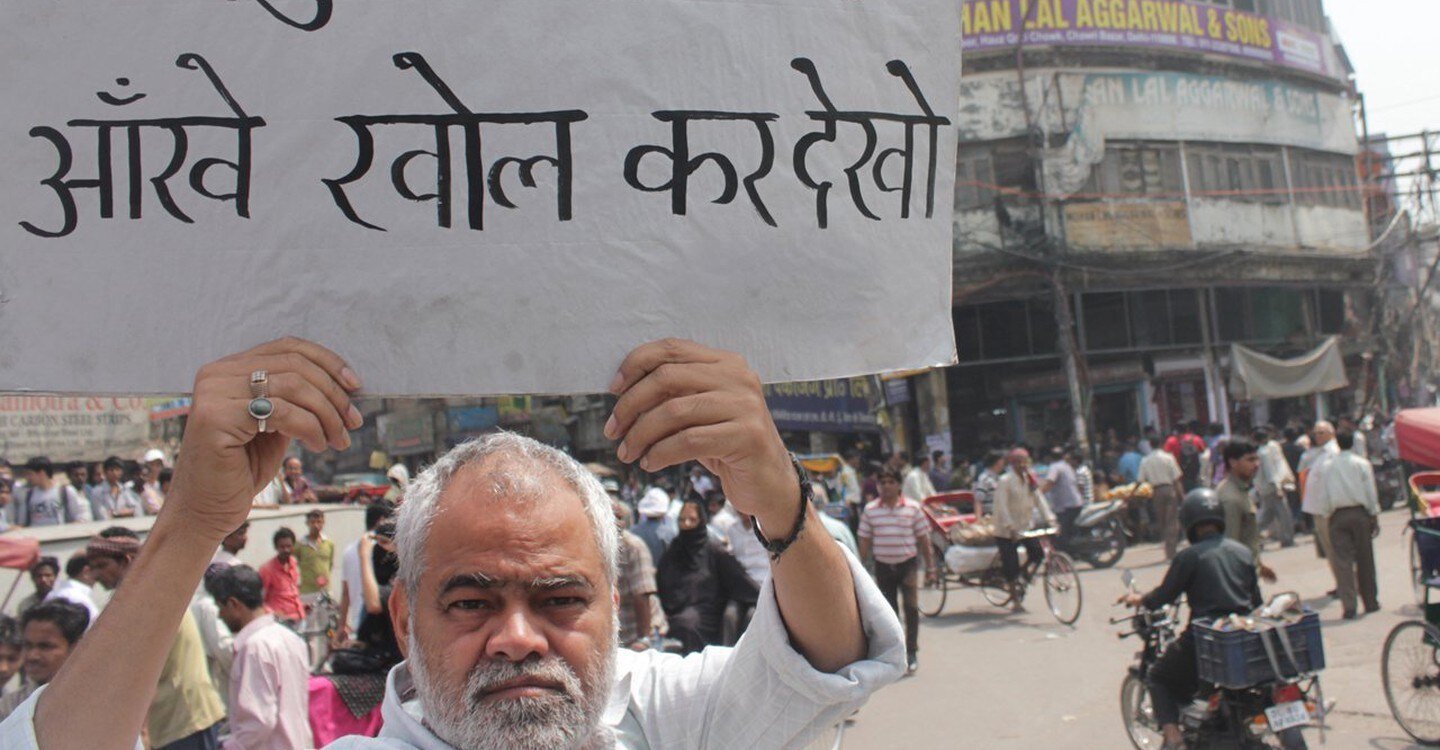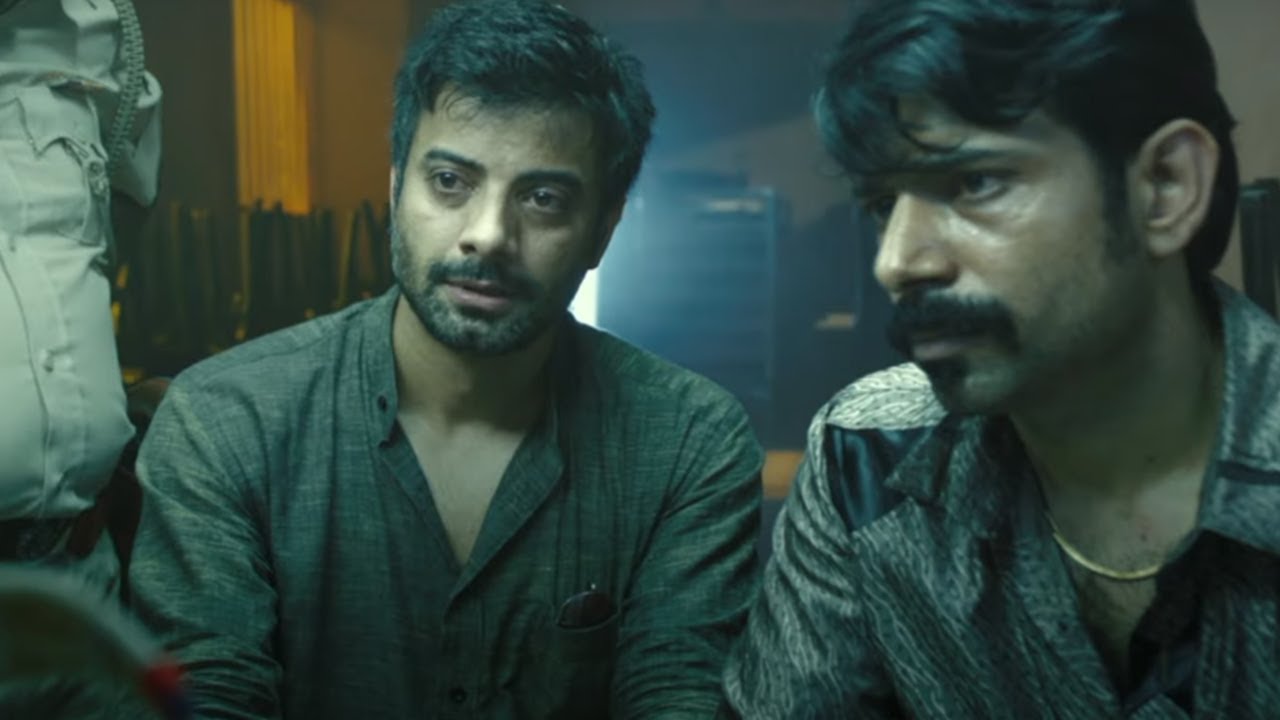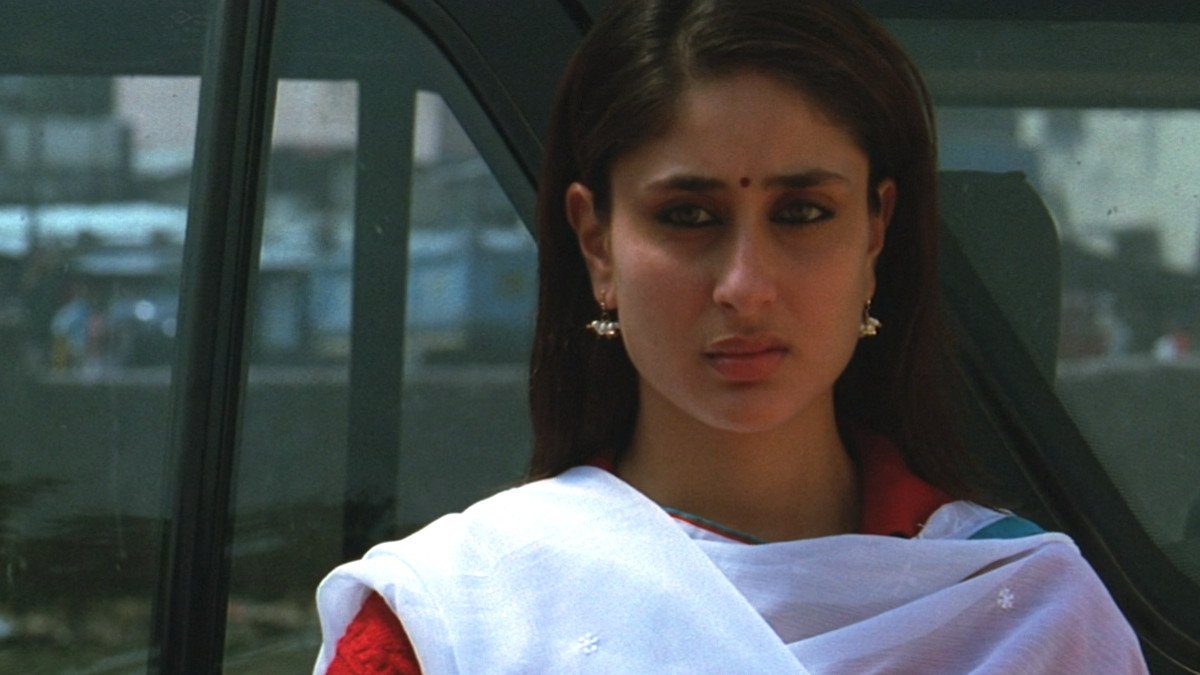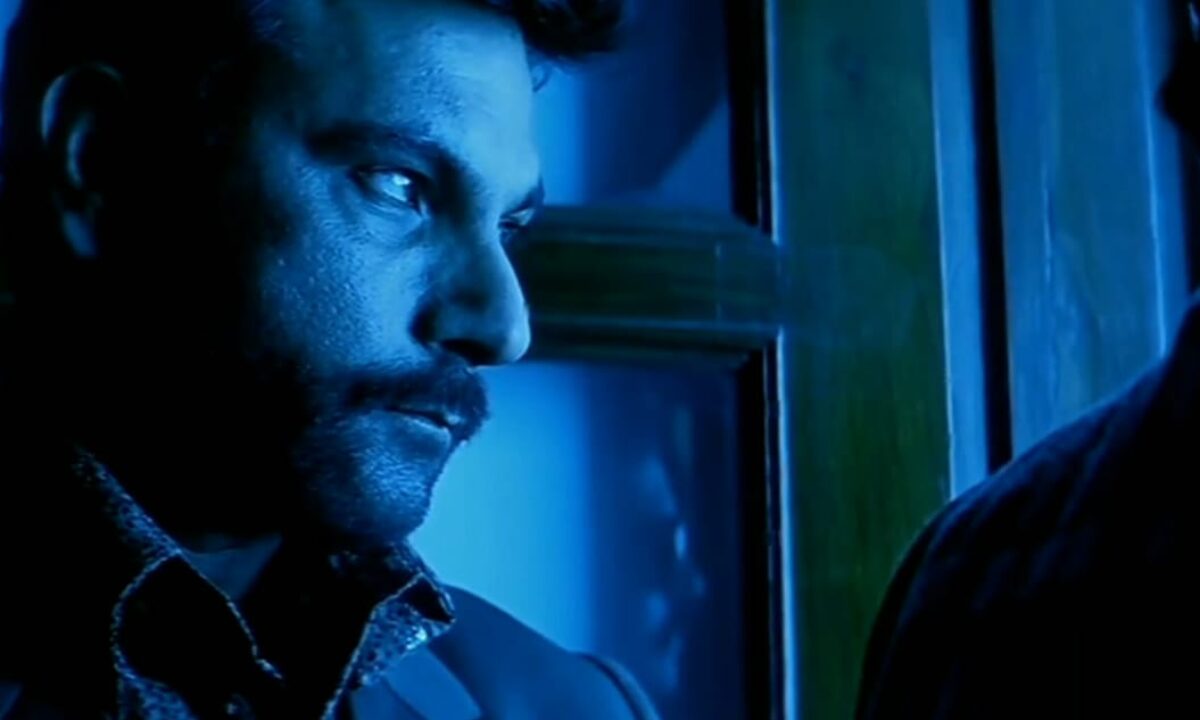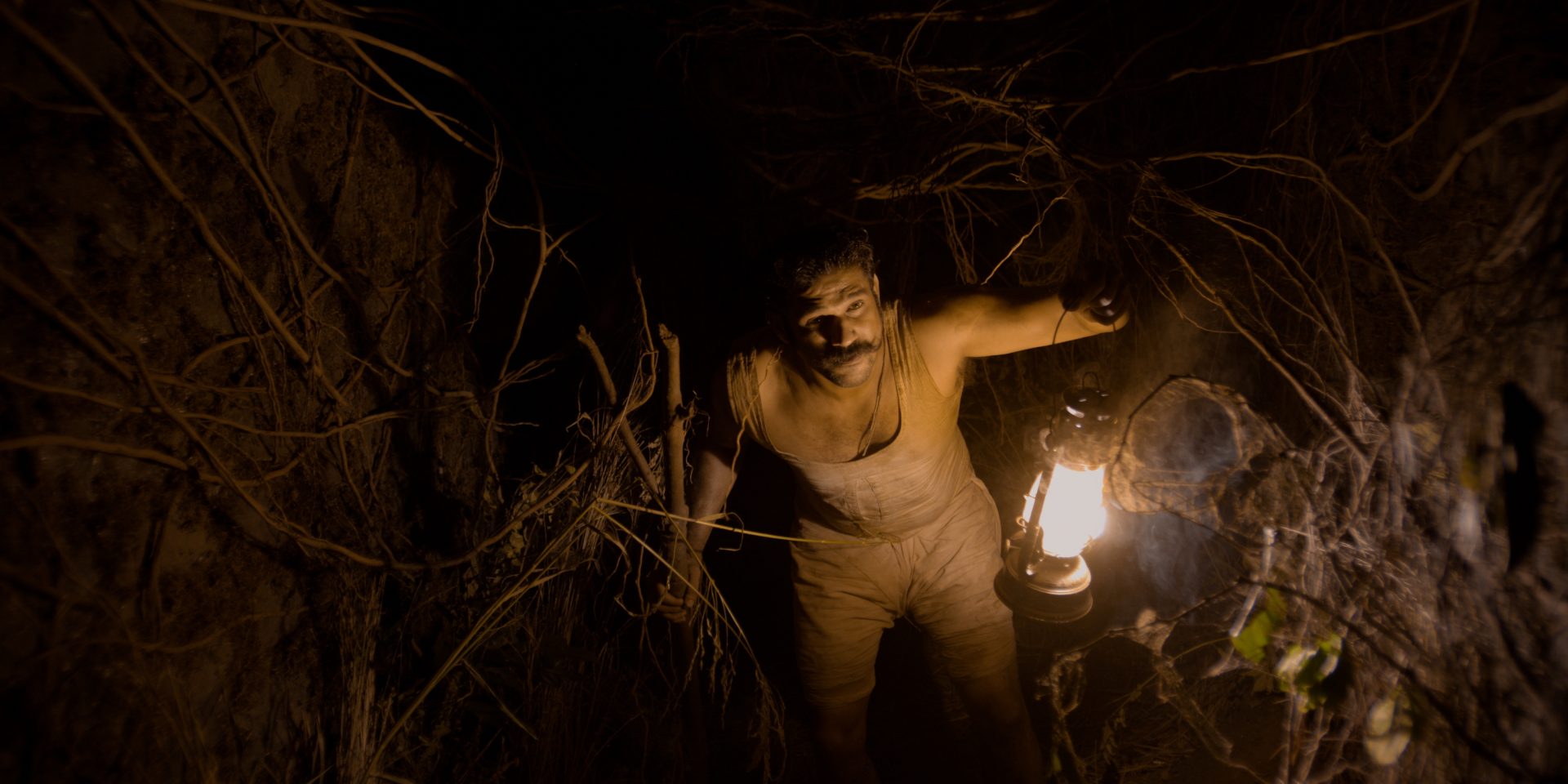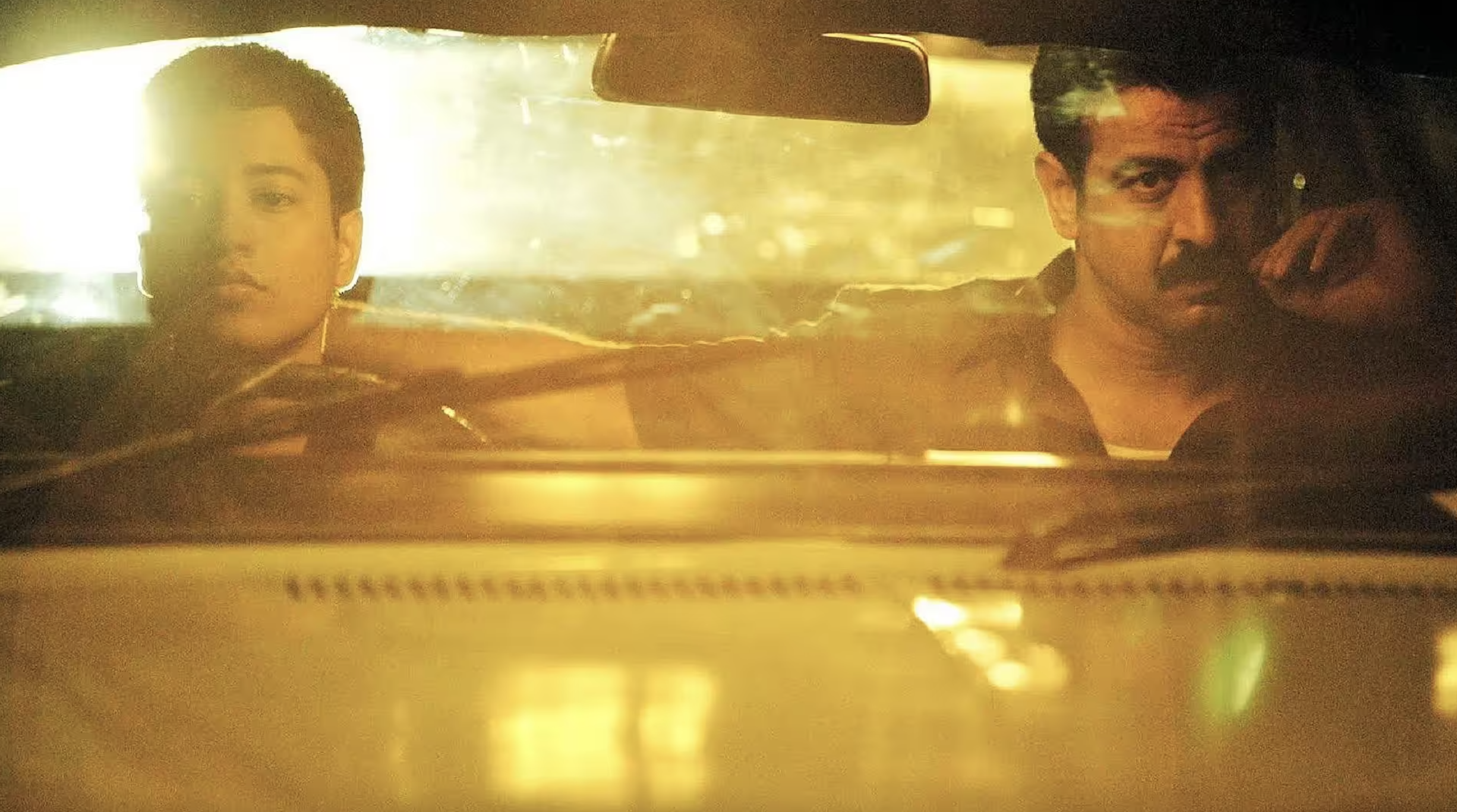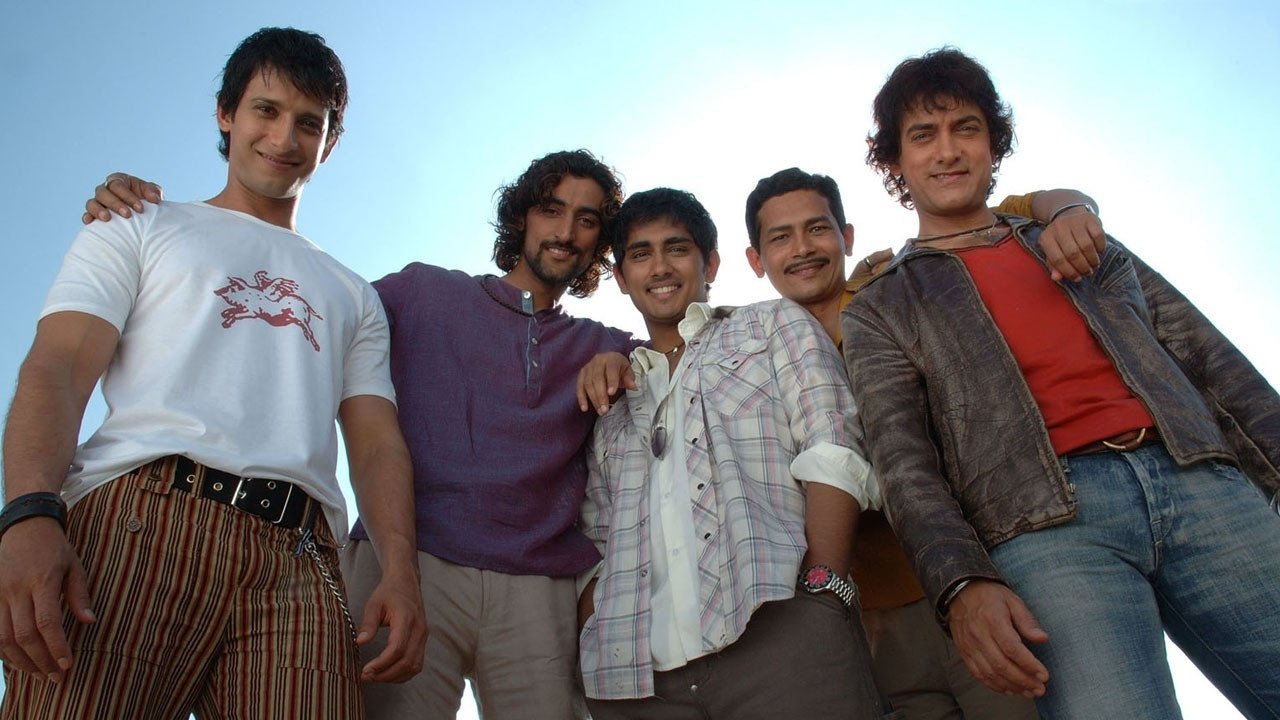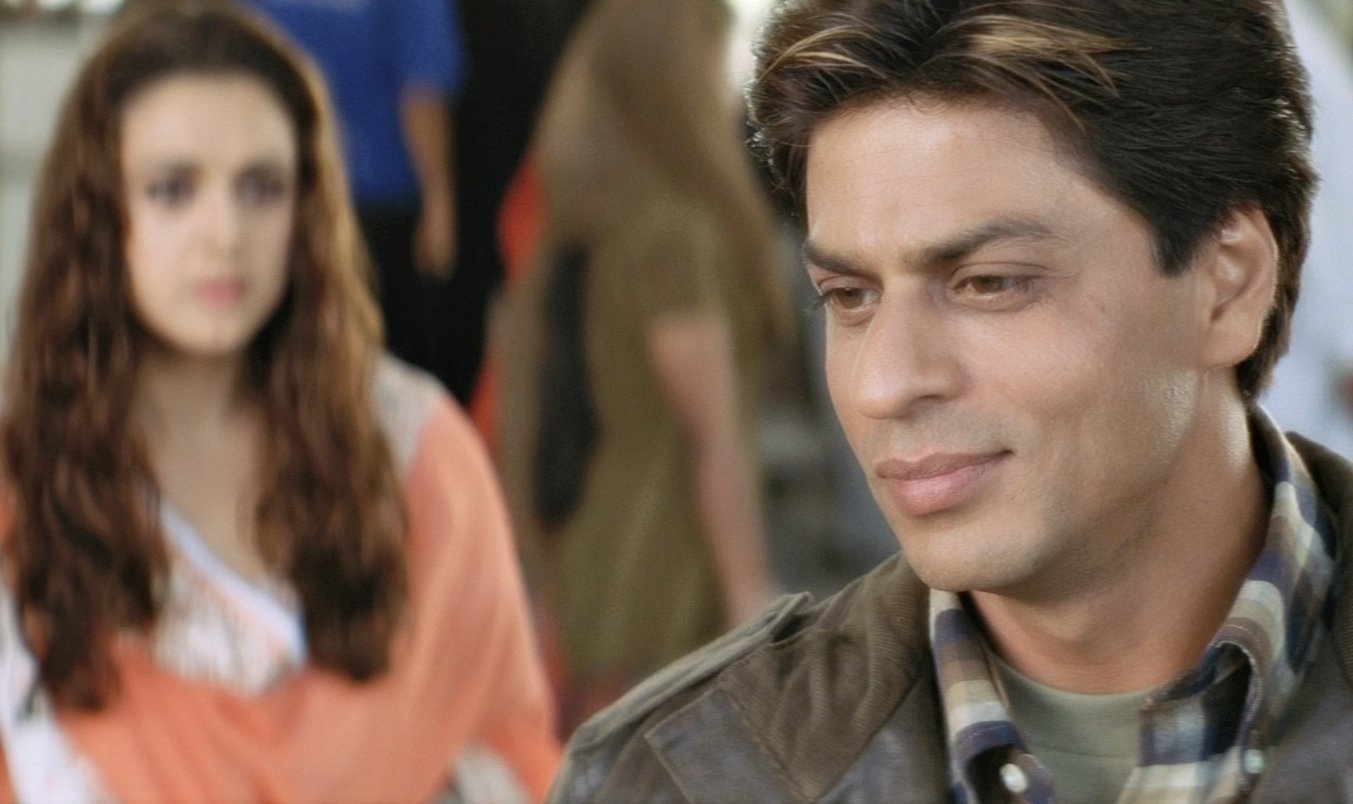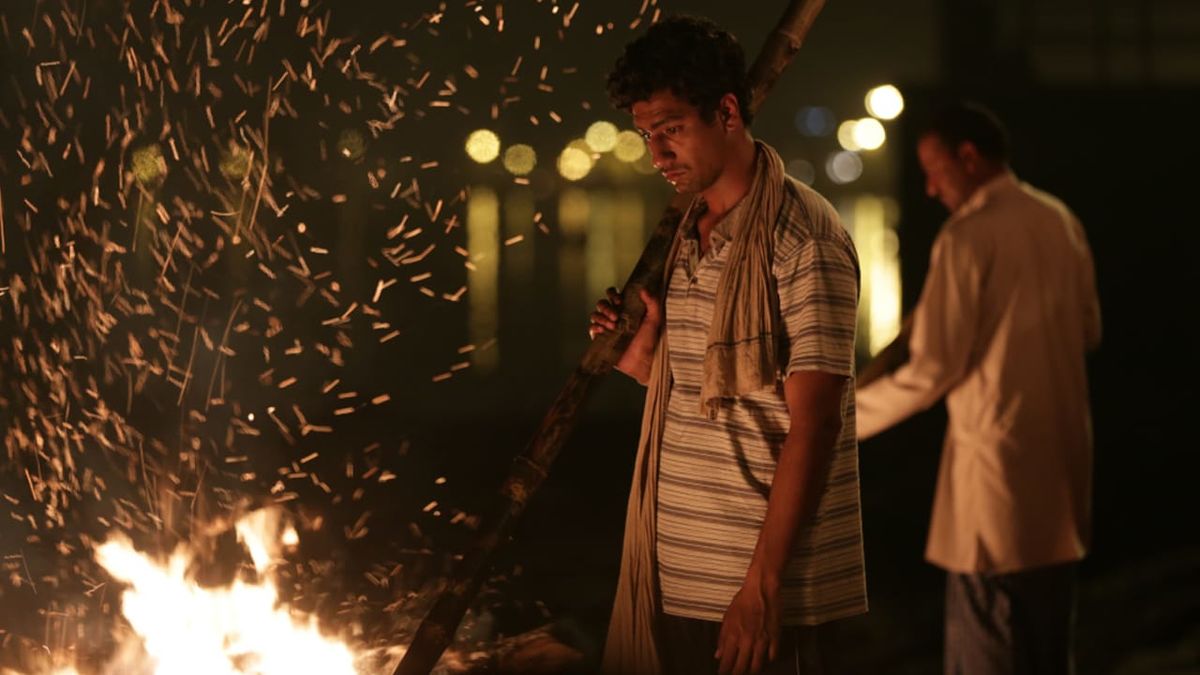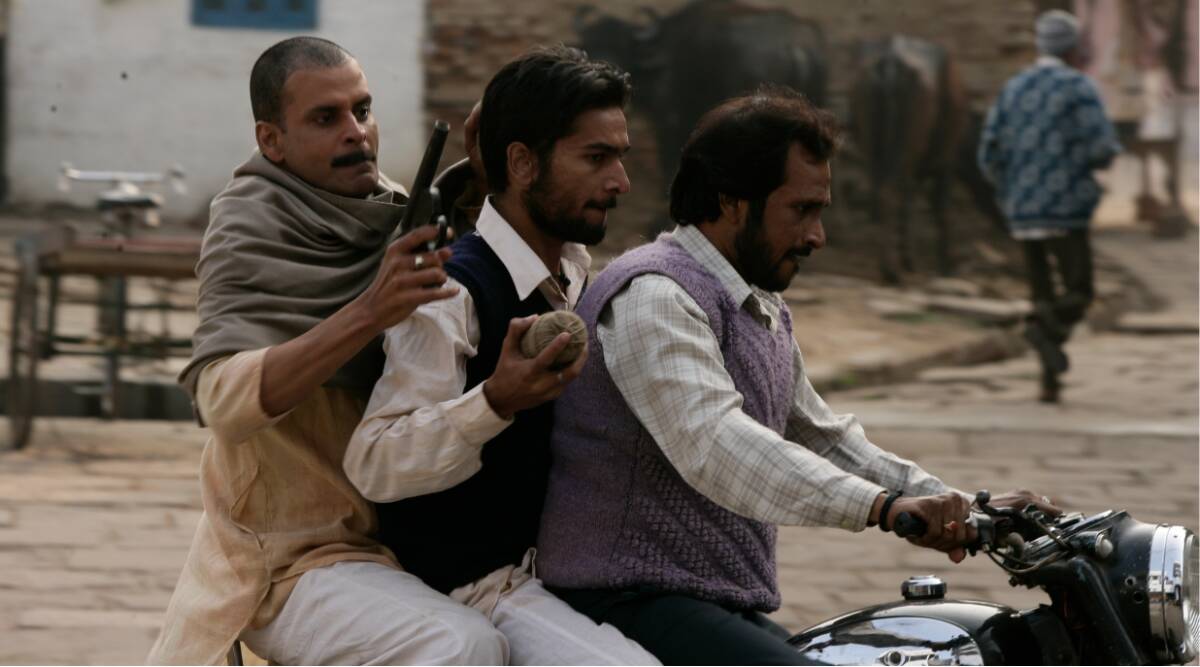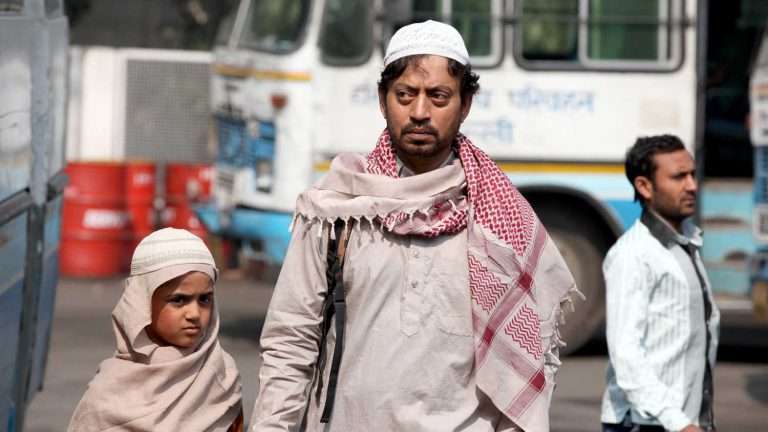The 50 Best Hindi Movies Of The 21st Century: Since parallel Hindi cinema succumbed to the influx of money and muscle and the deterioration of a director’s creative control in filmmaking during the late 80s and 90s, content, relevance, and realism took a backseat in the biggest film industry of India. Hindi films increasingly lost their artistic appeal. The advent of the 21st century, exposure to global cinema, and growing sensibilities allowed some filmmakers to experiment and push for change. The need was for a complete transformation, and those willing were far too few. Nevertheless, the century witnessed the arrival and growth of some very important filmmakers and, with them, some very important films that deserved the tag of greatness. Below is a compilation of the 50 best Hindi language films of the century that you can proudly recommend to any audience in the world and ensure your credibility.
HONOURABLE MENTION: DIL CHAHTA HAI | FARHAN AKHTAR | 2001
As evident as it is, I am not particularly a huge admirer of Dil Chahta Hai, or perhaps it does not appeal to me at this age in this time. Nevertheless, it deserves an honorable mention for its influential character. It has great elements of the ways in which love happens and how conflicts can be resolved with time. It inspired a generation by showcasing forms of romance rooted in reality and bonds of friendships people can connect with. And its sweet, entertaining character is perhaps the merit by which Dil Chahta Hai remains a recurring name.
50. HARAAMKHOR | SHLOK SHARMA | 2015
Shlok Sharma is one of the many talents Anurag Kashyap injected into the Hindi film industry, much like his mentor Ram Gopal Verma. When Shlok debuted with Haraamkhor in the feature film space, he provided definitive evidence of his talent. Haraamkhor is not an easy film to watch. It has no conventional entertainment value or a coming-of-age character that can remind us of our childhood without inflicting pain through the recollection.
What it does is shed light on an extremely prevalent but utterly ignored problem in our society: grooming young minds by predators. Grooming of children and their abuse is not restricted to a class, caste, region, or community but is found everywhere men are. The film can be triggering even though it’s largely a black comedy, but that does not compromise its importance in the storytelling space.
49. MADRAS CAFE | SHOOJIT SIRCAR | 2013
The most overwhelming aspect of Madras Cafe is the way it tells its tale. The most underwhelming aspect of Madras Cafe is the way it tells its tale. The aforementioned comment sounds paradoxical in its brief form. However, it isn’t. I was overwhelmed by the way Shoojit Sircar executed a very important and volatile chapter from Indian political history without resorting to bias and without submitting to routine elements for thrill induction. The screenplay and its tone escaped the jingoistic route. At the same time, the idea of narrating it through a confession made by the protagonist was weak.
Hits largely outweigh the misses in this spy-action thriller that has meticulous screenwriting given its political environment. As a closer-to-reality spy thriller that doesn’t have a false display of heroics, Madras Cafe definitely deserves its place among the best Hindi language films.
48. THAPPAD | ANUBHAV SINHA | 2019
When I watched Thappad, I saw it as an example of an inclusive screenplay championing empowerment, self-reflexivity, and exploration of the roles assumed by men and women in a patriarchal society such as ours. With the least number of false notes, Thappad remains Anubhav Sinha’s best work, if not his most angry. It takes a morally sound position against abuse and violence in relationships supposedly founded on love and/or the pledge to love.
To explore the nature of abuse and the many ways a woman’s role gets invisibilized through casual sexism, Thappad brings a set of characters from different classes and shows each of them to be confronting patriarchal violence. It also offers a space for growth to its characters and never dehumanizes them in making an argument.
47. SWADES | ASHUTOSH GOWARIKAR | 2004
Swades is people’s favorite, often considered a timeless Indian film that jolted a large NRI diaspora into action favoring their home country. The biggest merit of the film is its call to the privileged to come out of their apathetic and ignorant position and engage in constructive action. It calls them out for reveling in their comforts and only recollecting their home country as derived from ethnocentric pride every time their identity is cornered.
At the same time, it also calls out the status quo ignorance and hostility prevalent in the villages and passed off as traditions. Swades has a Gandhian soul, for it works on the idea of a village republic and problematizes the question of its development. However, it also diverges from the Gandhian ideology when it brings the role of modern technology into the picture.
Moreover, Swades remains an outcome of a Brahminical gaze that, while criticizing the ethnocentrism and casteism inherent to communities in India, succumbs to its own savior complex. It fails to see the root of the regressive nature of Indian society, which is a normalized graded inequality and emphasizes a lot on technology as the ultimate solution. But mistaking technology to be modernism can be lethal for developmental discourse.
46. KAMINEY | VISHAL BHARDWAJ | 2009
Kaminey is truly chaotic, and Vishal Bhardwaj’s meticulous direction brilliantly contains the chaos. In a hyperlinked narrative where people get entwined into a chase for money, power, and love, Kaminey becomes increasingly interesting as it progresses. Featuring Shahid Kapoor in a dual role of a distinct character, Kaminey confirms the talent of the actor that later gets established in Haider. It is one film that is an outcome of a great story executed with smart direction. And it should be a more frequent part of conversations around Hindi cinema of the 21st century.
45. BARFI | ANURAG BASU | 2012
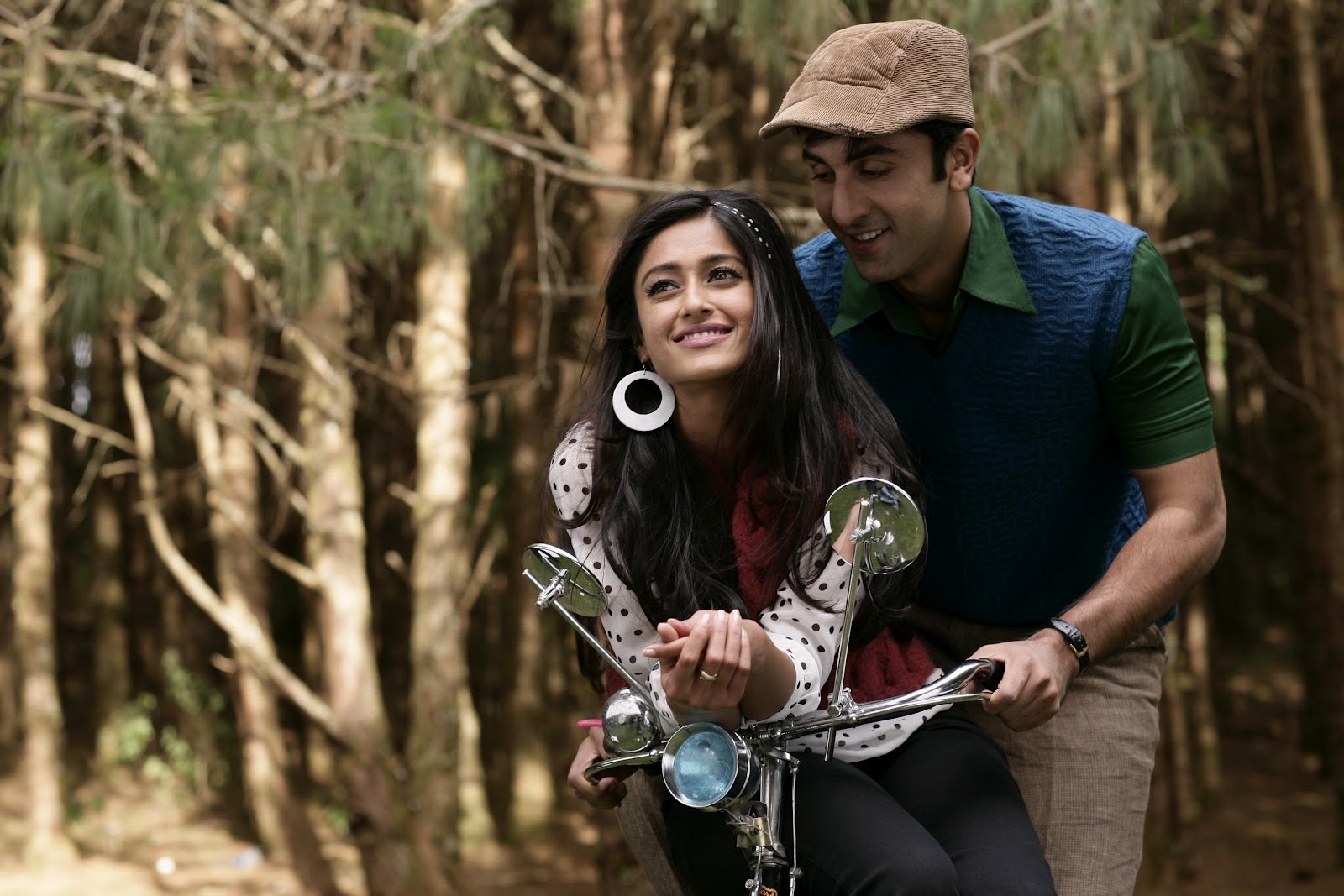 Barfi is a tale of the fulfillment of love along with its unrequited portions. It celebrates love through the purity of its characters, who act selflessly for each other without diplomatic intentions. Ultimately, Barfi becomes a compassionate tale of a beautiful relationship and the extraction of maximum happiness from satisfaction.
Barfi is a tale of the fulfillment of love along with its unrequited portions. It celebrates love through the purity of its characters, who act selflessly for each other without diplomatic intentions. Ultimately, Barfi becomes a compassionate tale of a beautiful relationship and the extraction of maximum happiness from satisfaction.
On the technical front, Barfi is full of merits. Anurag Basu has his brand of aesthetics. His mise en scene is full of lustrous shades of colors, resembling those of Wes Anderson’s films. The production design adds as much to the warmth one experiences as the script does.
I have my set of reservations against the film, for it treads on the thin line between inspiration and plagiarism in many sequences, stumbling to the other side. But indigenous elements compensate for all disturbances you have.
44. EEB ALLAY OOO! | PRATEEK VATS | 2019
Prateek Vats’ debut feature Eeb Allay Ooo!, looks into migrant lives in a country marked by inter-state resource disparity leading to large-scale intra-country migration of the working class. The working class that aspires to have a better life with its move into a new, promising region only finds itself toiling without rest. They do not have individual identities but are only seen as replaceable entities in this struggle for survival.
Prateek Vats’ film attempts to satire this institutional apathy that sustains the bitterness of this truth. At the same time, it positions humans to be imperialistic towards other species and shows how we have colonized all natural spaces and converted them to suit our needs.
43. PAAN SINGH TOMAR | TIGMANSHU DHULIA | 2012
When Paan Singh Tomar corrects the journalist interviewing him that you will find rebels in the valleys and dacoits are found in parliament, the conviction and angst in his tone are immediately registered, and we find ourselves attached to his character and curious about his life that caused a national champion to become a rebel. This is one of the most important stories told in modern Hindi cinema.
Through the life history of Paan Singh Tomar, Tigmanshu Dhulia is critical of the treatment meted out to our sportspersons who do not belong to Cricket. The state’s apathy and material deprivation have continuously removed them from society’s collective memory. Paan Singh Tomar is an example among many. Tigmanshu Dhulia keeps the film grounded in the region it is set in, while it gets propelled by a brilliant Late Irrfan Khan.
42. NEWTON | AMIT V. MASURKAR | 2017
Newton is an ideal hero who doesn’t want to tread anything other than the narrow path of righteousness. He refuses to give in to the definitions of practicality. He wears the badge of honesty and takes pride in it. He only knows one way to his duty. He doesn’t care for the eventual outcome. He doesn’t want to jump or swim the shoulders of those around him. Newton wants to walk, irrespective of the hazards. Morally rigid characters in Hindi cinema have always been a popular plot device.
They have been killed as supporting characters for the hero’s awakening. They have succumbed to the system time and again so that they work as a potent motivation for the game-changer. Or they have existed as superhumans, able to kill armies of villains. Ray, in one of his later films Ganashatru, allowed such a character to exist as the protagonist and breathe till the last, terminating the film with an optimistic end.
Amit Masurkar finds himself much more challenged in the increasingly corrupt environment of today. Nevertheless, he successfully creates Newton, who should have been more common and much more human in our cinema. Newton’s rigidity might polarise you ideologically, but you will never be in conflict with his intentions. No matter how much we gel in the practical world, boasting world wisdom to be materially satisfied, we all yearn for an ideal system. Newton gives a glimpse of what the system can be but isn’t.
41. KAHAANI | SUJOY GHOSH | 2012
Kahaani is an unforgettable thriller that gained cult status with time for a number of reasons. It was entirely carried out by a single protagonist whose only weapon is the indomitable will reflected through a carefully crafted act. It implicated the city it was set in and made it a character. Therefore, Kahaani is also an experience through Kolkata and its cultural landscape. It builds a thriller using an alternate method of investigation that bears no characteristic of the work done by professional spies and detectives, as we largely see in thriller cinema. This keeps us forever hooked because we can immediately connect with our protagonist until our expectations get subverted.
40. DETECTIVE BYOMKESH BAKSHY! | DIBAKAR BANERJEE | 2015
Dibakar Banerjee’s thriller set in a pre-independent India at the height of the movement for sovereignty is a work of technical wonder. Dibakar knows the source material well and adapts the same with a great emphasis on the antagonist because he is aware that only a great antagonist can render a relevant protagonist.
Dr. Guha is a menacing force, and he is only challenged by revelation. Byomkesh wins the first leg of the battle by revealing Guha to the world. Still, he also triggers a rivalry of a lifetime, which will never be explored due to the unfortunate passing of Sushant Singh Rajput coupled with the commercial failure of a truly good detective drama. In today’s time, with alternative screening options via OTT, Detective Byomkesh Bakshy! would have survived well. Hence, it exists as a reminder that we should be kinder to the films that dare to offer us something new.
39. PHOTOGRAPH | RITESH BATRA | 2018
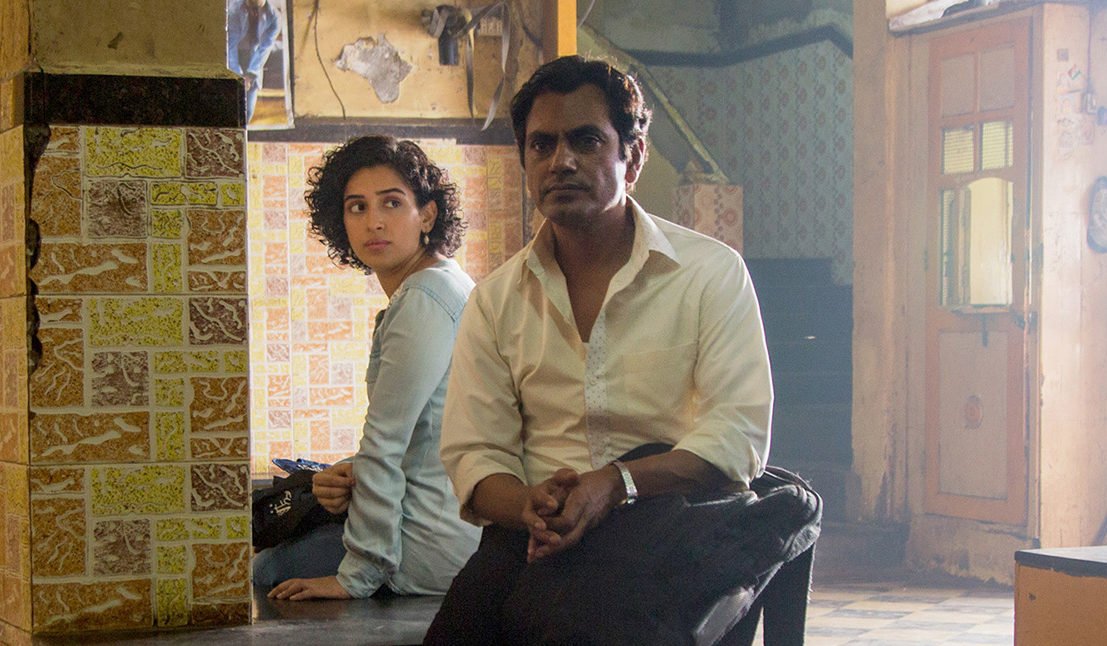
Ritesh Batra made one of the greatest Indian films of all time with The Lunchbox and built a reputation that precedes him. The Lunchbox, however, was not bait for film critics and cinephiles around the world. It was an exploration of what love entails, driven by genuine curiosity. Photograph is another story in the same book, appearing to be a calm exploration of love at its surface but managing to hide a symphony of the relationship between two characters that reflect each other with their attitudes but are very different from each other, at the same time, due to the social classes they belong to.
The film is given its effervescence from its unconventionality. It doesn’t pitch two behaviourally polar opposite characters against each other. It doesn’t let one character fill the gap that the other has by default, as two puzzles fit into each other. What you see is a couple of introverts sharing a silent relationship with no name and no burdens but only companionship and the will to make whatever effort possible for each other without any incentive or motive. The narrative of Photograph is bizarre, like a work of poetry we fail to comprehend entirely but manage to feel and get its essence.
38. SHAHID | HANSAL MEHTA | 2013
Hansal Mehta’s Shahid is an attempt to bring to the limelight an extremely important story, the likes of which the state believes in suppressing for its continued assumption of power. A biographical drama centered around the life of Shahid Azmi, a young lawyer who defended people accused of terrorism and was later assassinated for the same, Shahid is a serious film that discusses the importance of truth and the perils of fighting for it.
In one of his early and career-defining performances, Rajkumar Rao internalizes Shahid Azmi with his simplicity and gravity. Shahid also finds Hansal Mehta finding his voice as a biographical filmmaker laying the foundation for marvels like Aligarh and Scam: 1992.
37. PIKU | SHOOJIT SIRCAR | 2015
Piku is one of those rare mainstream films that provide entertainment without taking their audience for granted. Shoojit Sircar and Juhi Chaturvedi know how to create illustrious comedy out of the mundane routines of life. The key to their successful attempts is their ability to create strong characters and allow them room for development through the course of their films. Piku was Juhi Chaturvedi at her screenwriting brilliance until October happened. This film has abundant charm and humor, defining life in its unique way.
36. MY NAME IS KHAN | KARAN JOHAR | 2010
I am quite surprised to realize that many Shahrukh Khan films earn a place on this list. The surprise is not to find the films extremely great per se or to find other films lacking in excellence. The surprise is rooted in the fact that Shahrukh Khan films have grown relevant with time due to the rapidly worsening political climate of the subcontinent. In a time of rising Hindu fundamentalism, cultural erasure of Muslims, and persecution of their identities, a film about a Muslim man reinforcing his religious identity and confronting growing Islamophobia due to Western propaganda in the aftermath of 9/11 has only grown in importance.
Rizwan Khan asserts his identity when he detaches himself from religious terrorism. His journey is a journey defined by compassion, rigor, and perseverance. The journey Khan embarks upon is not a journey in which a man finds himself but in which the world finds this man. This journey is not the one in which Khan is begging for his place in the world but is rightfully claiming it. There can be valid criticism around Shahrukh Khan’s performance, but My Name is Khan is a film that has stood the test of time.
35. MAQBOOL | VISHAL BHARDWAJ | 2003
No list of Hindi films can be complete without mentioning Vishal Bhardwaj’s brilliant Shakespeare trilogy, with Maqbool being the first film as an adaptation of Macbeth. A haunting tale of greed driven by the finest actors of Hindi cinema, Maqbool is a product of meticulous writing and direction. Vishal Bhardwaj creates a compelling drama about the lust for power and the advent of guilt in the aftermath of sin.
The most interesting part about Vishal’s adaptation is his conceptualization of the characters of three witches, which he renders in the composite characters of police inspectors Pandit and Purohit, played by Late Om Puri and Naseeruddin Shah, respectively. The inspector duo not only predicts but also shapes the fate of the characters with their interventions in the narrative.
34. CHAK DE INDIA | SHIMIT AMIN | 2007
Shahrukh Khan’s Chak De India has grown to become a modern classic with the passage of time. People often love this film for the unlikely Shahrukh Khan presence, a film in which the superstar is the least of himself and the most of an actor. Cornered in a sociopolitical space where Kabir Khan is to prove his allegiance to the nation-state due to his religious identity, Shimit Amin partly criticizes and partly prophesies the attitude the Hindu majority meets with Indian Muslims.
Kabir Khan does so not by verbal arguments but by confronting the misogynist character of Indian public systems, the institutions of sports in this case, and then by coaching the Indian women’s hockey team to become world champions. There are many factors due to which Chak De India stands the test of time and becomes more relevant. The Indian national hockey team showcases a microcosm of Indian society and brings marginal ethnic identities to the mainstream.
Secondly, it brings attention to the material deprivation plaguing Indian sports vis-a-vis the resource privileges of cricket. The only thing that leaves a bad taste in our mouths is a transphobic dialogue rendered by Khan himself in one of the key sequences in the form of a joke, which ages like milk with changing times.
33. ALIGARH | HANSAL MEHTA | 2015
Hansal Mehta’s Aligarh shares its soul with Philadelphia (1993). That being said, Aligarh exists in the socio-political environment of Indian society to expose its deep-rooted homophobia and hypocrisy. The tale is true and tragic. Driven by one of the finest male acting performances of Indian cinema by Manoj Bajpayee as Prof. Ramchandra Siras, Aligarh finds sorrow in symphonies and love in silence. It wants to tell a story that conveys our failure as a society. It succeeds while we fail.
32. HIGHWAY | IMTIAZ ALI | 2014
Highway is arguably Imtiaz Ali’s most socially relevant work. It makes courageous choices through its events and dialogues to comment upon the class divide and socio-economic hierarchy and eventually be much more than a romantic tale of Stockholm Syndrome. People are essentially unknown to themselves. The greatest distance that lies before them to tread is the distance between their material and spiritual existence. Imtiaz builds a highway to allow the journey, a journey of self-exploration that pulls us out of suffocation and rewards us with a breath of pure air.
31. SHERNI | AMIT V. MASURKAR | 2021
I was pleasantly surprised by Amit Musarkar’s satire Sherni (2021) when I watched it because even though the director’s name had credibility, films based on the climate crisis and environmental degradation have been more than disappointing in the Hindi film industry. Sherni lets you juggle the cynical reality it serves and the optimism you feel in the scope of important cinema. Films around such themes are inherently tricky because you can’t chase nuance without falling into an abyss of hopelessness. If you attempt to be didactic for the sake of cause and a wider reach, you end up creating an endorsement that talks without affecting.
Amit’s first triumph is in tailoring the film with the same fabric as that of Newton, as he shows bureaucratic apathy, chaos, and political interventions rooted in the vested interests of the actors. A number of things constitute the screenplay. Amit doesn’t propose blanket solutions for blanket problems (a gimmick used by many “social cinema” filmmakers to provide catharsis to the audience with gibberish since blanket problems do not really have blanket solutions but micro ones which resolve the intrinsic complexities before tackling the challenge). Instead, he lets the vicious cycle take its turn. His film leaves you with an understanding of the situation rather than preaching how to mitigate it, encouraging you to interpret the problem and work towards the cause in your own way. He is not running in a savior mode, attempting to exploit social reality.
30. LOOTERA | VIKRAMADITYA MOTWANE | 2013
The potency of aesthetics is often exploited and seldom utilized. When the faith is feeble, and the tale is hollow, artifice is employed. But when a heart is at work to write a story with an innate luster and sketch its inhabitants with purity, a Lootera is created. A film that is soft on the senses, like a blend of two seasons, a calm display of conflict, and an exhibition of the most beautiful of efforts. It’s everything unique about my culture. It’s everything Indian and yet, universal. It’s an affirmation of the idea of employing poetry to drive a narrative. It’s a film that flows like a song. A film to fall in love with.
29. MUKTI BHAWAN | SHUBHASHISH BHUTIANI | 2017
Mukti Bhawan, or “Hotel Salvation,” is beyond what is played on the screen if one can invest himself in the film completely. It won’t keep you on the edge of your seat, nor will it get you excited or mesmerized; it won’t set you in a laughter mode either, but its consumption demands your focus and your complete investment to dig into the underlying philosophies and complexities.
Mortality is a truth hard to embrace and impossible to be predicted. Mukti Bhawan tells the story of a son whose father is reluctant to leave his breath and attain salvation in the holy city of Varanasi. The turmoil which our characters go through in the film makes us wonder if choosing what can’t be chosen is possible. This film is not just one of the best films of the decade but also a criminally underrated and underseen Hindi film of our generation.
28. SHANGHAI | DIBAKAR BANERJEE | 2012
Shanghai is a politically angry film that champions a deft screenplay devoid of escapist tropes and dilution. It is aware of the vicious cycle of corruption and power dynamics. It is aware of the strengths and weaknesses of its characters. Furthermore, it allows politics to cut politics and ignites a very important debate we are mostly ignorant about. One of the biggest merits of the film is its cinematography, which captures the tension of the film’s environment with accuracy. Shanghai’s relevance will never be weakened in our system. And that is an uncomfortable fact to know.
27. SONI | IVAN AYR | 2019
Not only is Soni as courageous as its protagonist, but it is an unadulterated piece of cinema that doesn’t succumb to the requirement of pleasing or spoonfeeding its audience. Nor does it take them to be of a lower intelligence quotient when it serves them with discomfort. It is as cold as the current reality, the dismissal of which is only an act of sheer ignorance and escapism from which is impossible. Soni examines the state of our system and our society to render its inherent gender discrimination naked.
It exposes the bias, disparity, and vulnerability the other half of the society is subjected to and dissolves the idea that power makes people equal to Soni. The likes of her are given power but aren’t allowed to explore its realms fully. It is a report card of the progress we have made. It isn’t loud in its exposition but surely is brave in the way it sketches its characters and the culminating anger in them. Soni reminds us that beyond the fancy ideas of how cinema can represent our police lies the reality that policewomen and policemen exist as humans mocked, threatened, and tortured by the same system in the same ways, and to be a woman among them is only worse.
26. BADLAPUR | SRIRAM RAGHAVAN | 2015
Rage can be prolonged when fueled by the desire for vengeance. But when does satisfaction arrive? Is it in the act of taking revenge or in the sense of its fulfillment? Badlapur challenges popular ideas. It establishes how guilt is much more chronic than any rage can be. It perfectly showcases how vengeance is not a ticket to peace and how it can take many forms beyond physical violence.
In a muted battle of wits, Raghu and Layak run parallel rather than chasing each other. One receives unsolicited trauma, and the other asks for it and embraces it. Strength gets diluted in retribution, and victory becomes obscure. Badlapur doesn’t attempt to champion one’s expectations, it defies them.
25. OM SHANTI OM | FARAH KHAN | 2007
A very self-aware and celebratory pastiche of popular Hindi cinema, Om Shanti Om’s substance lies mostly in its entertainment value and its soft satire on many practices of the Hindi film industry. There are not many political layers to uncover in this film, but the sheer entertainment value is derived from the exploitation of tropes, stars, and their aura. It is also a rare film that has stars making fun of themselves and contributing to its heightened tone. And most importantly, Om Shanti Om is what can be called a Masala film in the true sense because of its defining characteristics.
24. MUKKABAAZ | ANURAG KASHYAP | 2018
Mukkabaaz is a massively misunderstood film, in my opinion. Upon rewatching, I realized how bitter of a commentary this film offers on the social-institutional order. It is a genre film with heavy mainstream touches, but its essential character is a satire. The film is so deeply rooted in the milieu that every dialogue becomes either an expression of rebellion or remorse. The anti-climax is a deliberate attempt to prove the anti-climactic nature of life, where virtues often lose to the powerful. Mukkabaaz is important because it reveals our survivorship bias.
In our relentless pursuit of faux inspiration, we are so obsessed with the stories of triumph that they have clouded our ability to take stock of situations and understand that behind every victor stands a crowd of those who lost. The stories of victors are necessary to keep us hoping, but the problem arises when we start creating them as a template for our own journey. Only when we look at the crowd of millions who failed do we realize that the cause of failures is more institutional than individualistic.
Every act to become successful in purely materialistic terms is merely an outcome of internalized socio-fascism built into us by the propaganda of religion and capitalism. Because we do not seek to create an equitable society when we seek success, we just wish to move from being the oppressed to being the oppressor. Mukkabaaz’s anti-climax is an ugly truth revealing that survival always takes precedence over the maintenance of dignity for many of us. And nothing egalitarian can be founded as long as we annihilate the caste that defines our society.
23. KAPOOR AND SONS | SHAKUN BATRA | 2016
The love that exists in a family is not that of a caramel glaze, sweet from the outermost shell while being able to reflect what you project. The love flows in the fibers of familial bonds and keeps the family alive, however inimical the environment becomes. Kapoor and Sons manifest a family in its most organic shape. You feel the heat that is generated from abrasion. You feel the warmth that follows their moments of harmony. You feel like a family. It becomes not only a story of self-reflexivity and acceptance of what we do not like in others, but it also becomes a manual on how to do that. Establishing harmony is an exercise that needs kindness. This rare gem from Dharma Productions encourages us to evoke that kindness from within and embrace the family for who they are, not what we want them to be.
22. AANKHON DEKHI | RAJAT KAPOOR | 2013
Bauji believes that reliance upon visual perception is the finest way to deal with doubt. What is seen can’t be disputed. Faith should stand straight on the foundation of experience. Life should become simpler and, supposedly, conflictless. But does it?
Aankhon Dekhi employs absurdity to deal with existentialism to convey an extremely profound message to its audience. Driven by a spellbinding performance from Sanjay Mishra, this is one of the most ambitious Hindi films of all time in terms of thematic density. In today’s time of fundamentalism and hate becoming culturally appropriated via propaganda, Aankhon Dekhi exists as an important film to fall back on, for it champions the process of scrutinizing information before establishing it as truth.
21. UGLY | ANURAG KASHYAP | 2014
Ugly is a manifestation of Kashyap’s parental guilt, as he has mentioned in interviews. With complete awareness of the outcomes of one’s actions and ignorance, Kashyap explores the dark corners of our reality. The darkness is not so much in what people do but what people are supposed to do and keep running from. It is perfectly understandable to make hurried choices in an unpragmatic pursuit of dreams.
But what hurts the future is the stubbornness preventing us from going back on our choices and reassessing them in the present. In Ugly, people get caught up in the fulfillment of their aspirations that they collectively kill innocence. They lead to a negative externality that cannot be internalized or reconciled. Ugly is perhaps Kashyap’s most personal work, and it is reflected in the screenplay. It is one of the fine Hindi films that are largely underappreciated.
20. JHUND | NAGRAJ MANJULE | 2021
Jhund is a revisionist film for the internalized storytelling aesthetics commercial Hindi cinema has been adopting for quite a while. It brings all the tropes of the mainstream (the story of underdogs, an activist fighting the world for their emancipation, disbelief of the world in them, their disbelief in the world, their gradual rise and eventual victory) and works against their apolitical gaze, star-centered screenplay, and disregard for representation. Jhund does not come from a space of assumed understanding about a social group/individual but actual knowledge rooted in lived experiences.
It is nonexperimental and yet does a number of things in a self-aware manner. Primarily, it is about representation. Jhund is a microcosm of society that encapsulates its diverse glory. Even though Amitabh Bachchan plays the protagonist, Manjule keeps moving from one character to another and gives extended screen time to tell their stories. He demands accountability from people representing institutions and establishes sports as an emancipatory device.
The divide and disparity that exists in our society due to caste-class congruence are explored in an intricate manner, even if it means breaking the flow of the central narrative. Still, he avoids obsessing over a message by immediately neutralizing the intensity of such sequences using natural hindrances, realistic dialogues, cuts that do not register reactions, etc. In the end, we are left with a film that truly represents Indian society and what sports can do to make it better.
19. TITLI | KANU BEHL | 2014
The power to make a choice is an illusion to all of us who have always been dictated to. But its illusionary appeal is never equivalent to powerlessness. Wings may take their time to grow. The phase of metamorphosis may render us vulnerable. But an escape is only realized when we take a leap of faith. Titli is about making the toughest choices that succeed or precede guilt, agony, and fear. It is about molting the fragile armor of masculine ego and pretense. At the end of the day, the world is only as ugly as we make it.
18. MEEL PATTHAR | IVAN AYR | 2020
When I watched Meel Patthar, it felt like a distant cousin of Zhao’s acclaimed film Nomadland and, in many ways, more personal. The merit of Ivan Ayr’s sophomore feature is that it’s tailor-cut from the same fabric as that of his debut, Soni. Soni, Meel Patthar, and Nomadland exist in a cold, harsh environment within which the ailments of the body aggravate, cuts burn more, and an individual gets stretched mercilessly between their physical needs, which are imperative for survival, and mental occupations, which are imperative for existence.
Ivan’s directorial choices are well-thought-of in Meel Patthar. His characters can’t afford to look solely into their current grief or imposed struggle because their body is an obstacle to creating a retrospective mood. A detachment is levied on them by the system. A system so cold, apathetic, and inhumane that even before the individual can attempt to overcome and embrace his grief as a part of his existence, he is driven to first secure the moments, actions, and events he exists within.
In a capitalist world of agents driven by self-interest, one becomes numb to neglect and rejection due to the repetition of the same events. People are reduced to replaceable instruments, cogs in a machine; dignity is carefully measured to navigate the behavior towards others, the routine gets prioritized over abilities, and death becomes a journal entry. And the only source of hope one is left with is in the flickers of compassion found in random people that make us feel that we are still a community.
17. OMKARA | VISHAL BHARDWAJ | 2006
Vishal Bhardwaj is a great writer. One can look at his adaptations of Shakespeare’s works in the Indian sociopolitical and cultural context and marvel at their comprehensive brilliance. They don’t feel alien stories force fit into a society they are incompatible with. There are no contrivances Vishal Bhardwaj is seen resorting to, which end up universalizing the source material and speak a great deal about the human condition.
The need for more power can corrupt a person, yet this same vulnerability to corruption increases one’s vulnerability to maintaining the power they already possess. Jealousy has an all-consuming force. Doubt has an attribute of lethality embedded in it. Only destruction prevails when people choose to justify these feelings by ignoring the potential outcomes they bear instead of rationalizing them with a sense of self-awareness. Omkara tells a tale of the destruction, greed, and entitlement, particularly characteristic of the oppressive caste Hindus, and how humans fail to predict and prevent it.
16. BLACK FRIDAY | ANURAG KASHYAP | 2004
Hussain Zaidi’s books have been adapted into many Hindi films but not without a fair dose of sensationalization. Anurag Kashyap was initially approached to write a series for a news channel based on Zaidi’s Black Friday: The True Story of the Bombay Bomb Blast, which he wrote as a six-part miniseries that was later shelved. Because he believed that the material would work better in the form of a film, he made Black Friday.
The strongest feature of Black Friday is the great detail with which it looks into the lives of all those involved in the terrorist attack to reveal the powerplay characteristic of the systems of intolerance that are hostile to innocent lives. It works on the fundamental of violence begetting violence and implicates the political developments in the nation preceding the 1993 Mumbai serial bomb blasts that claimed 257 lives and injured thousands. It also has a great dose of black humor rooted in certain characters’ helplessness, pretense, and indolence, and it inspired filmmakers like Danny Boyle.
15. HERA PHERI | PRIYADARSHAN | 2000
I have simply not laughed more while watching any other Hindi film than I have watching Priyadarshan’s Hera Pheri, and that itself is a reason to have this film so high on the list. It has an evergreen character. Because even with mature sensibilities, the film hasn’t become unfunny and stale like many other comedy films of the early 21st century. A remake of Siddique-Lal’s 1989 Malayalam film Ramji Rao Speaking, Hera Pheri is a brilliant adaptation of the chaos in a linguistically different but economically similar culture. It is also evidence of what Priyadarshan does best: coming across a great Malayalam film, adapting it into the Hindi language, and giving the remake a life of its own. This is why the director has managed to give so many comedy films that have emerged as modern classics with time.
Hera Pheri is an ensemble of unforgettable characters humoring us with their impeccable comic timing and gestures. It is a film that can be watched any time of the day and year.
14. TUMBBAD | RAHI ANIL BARVE | 2018
I clearly remember admiring Tumbbad a lot, but I failed to grasp the entirety of its greatness upon my first watch. In the cinephile circles, it was being raved about for inventive horror, beautiful production design, and muted cinematography. The technical brilliance of the film was winning acclaim, and I agreed. But I sighed at my lack of engagement with the film’s narrative. Then came a fateful day four years later since its release when I managed to rewatch the film with a group of friends.
Only this time, I could see the larger political themes the film had incorporated. It was not merely about greed, which is an essential feature of human nature. But it was a reflection of Brahmin greed and the continuous exercise of appropriation that the oppressor caste groups have engaged themselves in. In a brilliant political satire masquerading as a horror film, what separates it from other films around greed is that the protagonist is not descending into corruption from a higher moral pedestal. His aspirations are already at the bottom, and his descent is further into the abyss. The descent is not derived from scarcity and impoverishment but from a sense of entitlement. Tumbbad is not about the genesis of corruption but the expansion of it.
13. GULAAL | ANURAG KASHYAP | 2009
My admiration for Gulaal is more an outcome of its album than its narrative. It is also Kashyap’s most socially aware work because he scathingly criticizes the false pride of Rajputs and the emphasis they put on violence as valor. Born in a Rajput family, Kashyap calling out the ideological hollowness of his own oppressive caste group in the form of a film centered around student politics has a degree of validity. But beyond the greed for power and religio-caste extremism, what Gulaal gets right through the lyrical brilliance of its album is how the system perpetuates oppression and violence. In the context of post-Independent India, Gulaal paints a pessimistic but realistic picture of the powerplay conspiring in the nation for ages.
12. TAARE ZAMEEN PAR | AMOLE GUPTE | 2007
Taare Zameen Par is a film that was created out of pure love for children. It doesn’t see them as builders of a nation, as resource potentials requiring capital investments. It sees them as tender saplings that need love and care. The film argues that only their happiness matter. Children aren’t objects of aspirations or prestige. They aren’t obliged to perform. The obligation lies with parents who choose to bring children into the world. And when parents rise above their self-interest, they can see the gap between what their child(s) needs and what the child(s) is being provided with.
Taare Zameen Par leaves a strong impression on our memory and emerges as something unforgettable. It has a significant social impact in terms of dyslexia awareness. Even if education institutions had teachers for specially-abled children, Taare Zameen Par became an argument of emphasis and encouraged capacity building.
11. UDAAN | VIKRAMADITYA MOTWANE | 2010
Udaan is not about defiance, abuse, or escape. It is not about rebellion, success, or making dreams come true. Udaan is about growth. The metamorphosis of every adolescent into an adult, not through the attainment of a certain age or physical ability/attribute but a fearless leap, a conscious choice, the first successful control of one’s action and not just the desire of it. Udaan is a letter to each parent and every child, simultaneously reminding them of their capabilities.
Udaan is one of the strongest debuts of a director. Vikramaditya Motwane created a space for himself that he could only occupy.
10. RANG DE BASANTI | RAKEYSH OMPRAKASH MEHRA | 2006
Rang De Basanti has stood the test of time. Rooted in the liberal values of pledging yourself to the cause of the people of a nation and defining it as the “true” form of patriotism, Rang De Basanti draws an equivalence in the subjecthood to colonialism and subjecthood to a neoliberal state. That itself is the most radical character of this film because, essentially, it argues that the youth were fighting then for complete freedom, and the youth are fighting now for the same.
Ultimately, the then-colonial state dictated what it found best for its subject and justified the subjugation of an entire civilization as a moral cause. The neoliberal state of the present pretends to dictate what is best for the land constrained by political boundaries culminating in a nation when it is, in fact, only ensuring the preservation and growth of a corrupted elite minority at the cost of a large majority.
It may be important to flag the director’s motivation behind making the film, which is reportedly rooted in anti-Mandal commission protests, henceforth hinting at the casteist character of the origin of the film. At the same time, it cannot be imposed on the film itself because the film chooses to talk about the corruption entrenched in our political institutions. However, one cannot also deny the fact that corruption is merely a symptom of a set of greater problems specific to Indian society.
We are deeply casteist and conservative as a society, with abysmally low adoption of rational thought. While Rang De Basanti is inspirational and can possibly be the genesis of radical youth action against oppressive systems, it is still a film talking about a symptom with a de facto ignorance towards fundamental problems. And therefore, it must only be taken as an inspiration to do better, to make better and not as the greatest our cinema has been.
9. SONCHIRIYA | ABHISHEK CHAUBEY | 2019

Sonchiriya keeps all its characters extremely vulnerable. They find themselves accountable even after death, so peace becomes a resource long lost. It is about people fighting with the demon of their past, experiencing a loss of identity in the present, and watching the future closing in on them. The subplots are well-handled, and actors shine in their performances. Sonchiriya brings out the best in Ranveer Shorey, hinting at the untapped potential. It also boasts the career-best performance of Sushant Singh Rajput.
8. HAIDER | VISHAL BHARDWAJ | 2014
Haider is a political poem, a literary slap, a writer’s fury, and a raised finger at apathy. It is a work of fine craft, excelling at each department of filmmaking. Arguably the finest film of Vishal Bhardwaj’s filmography, Haider also extracts Shahid Kapoor’s career-best performance, pitching him against the likes of Tabu and Kay Kay Menon. The film itself is a character as much as it is about the character. This film will exist to remind all artists of an artist’s duty while staying committed to their craft, and it will be a matter of immense pride if any Hindi film in the future surpasses Haider when it comes to literary adaptations.
7. VEER-ZAARA | YASH CHOPRA | 2004
I had the opportunity to watch Veer-Zaara only recently, and I wasn’t expecting anything even close. Veer-Zaara, to me, is a fantasy musical that portrays aspirational love and its potency in a world of hate. The very premise is written with sheer passion, for it conceptualizes love beyond human constructs. Yash Chopra treats love like a supremely powerful force that can create unimaginable outcomes out of most ordinary events. He has done it before, but this film has his seasoned self operating with confidence and security.
There’s not much room for pragmatism in this story when situations of decision-making arise. Feelings, passion, and idealism guide all decisions. After all, pragmatism often becomes a tool to preserve the status quo by dismissing anything that challenges it by branding it as ideal or incompatible with the world order. In his rejection of pragmatism, Yash Chopra inadvertently rejects the status quo. While he never says it, he implies the futility of national borders and the illusion of difference between the people of two nations as perpetuated by the state. Nothing can stop Veer from choosing Zaara, expressing his love to the world with pride, and, eventually, hiding it, as well as his own identity for the lover’s well-being. Time, costs, and the promise of life are not variables under consideration.
On the other hand, nothing can stop Zaara from devoting herself to her lover’s honor. The bond is aspirational for every heart that beats, which doesn’t mean that one would aspire to do what they did. It only motivates a lover to invest passion and devotion in the act of loving.
Veer-Zaara sees virtue only in the truth and an act of love. It endorses the radical cause of truth in running the world over methods of incompassionate neutrality and self-preservation. And all of this reaches the audience in a Yash Chopra film defined by tropically grand frames, mesmerizing musical compositions, and a gorgeous Shahrukh Khan.
6. OCTOBER | SHOOJIT SIRCAR | 2018

It was only upon a rewatch that I could encapsulate the entirety of this film’s merit. The greatest aspect of the film is the unconditional placement of value in human life in good faith. That existence itself is valuable because it is not solely the function of a human but also manifests in the bonds the human forms in the social sphere. Therefore, the loss of existence is borne not by one but by many. And because existence is a dependent function, it necessitates that we preserve it not because there’s utility but because it has value. October deserves but love which remained unrequited in its selfless marrow, for love may not always flow in words but the shimmer in eyes.
5. MASAAN | NEERAJ GHYAWAN | 2015
When the funeral pyre is burnt into ashes, the identity, attributes, color, and deeds of the individual are reduced to irrelevance. When the very complex compound that is human is reduced to ashes, what is left is a simple mixture that is pure. Masaan is a pure cinematic ground on which, contrary to the meaning of this word, art breathes into life. Neeraj pulls out the most imperative complexities of humans and weaves a tale of life and death around it in a flawless manner, one that flows without a hindrance and one that doesn’t succumb to the burden of the complexities it is carrying.
People will have different choices, for the experience of cinema is highly subjective, but Masaan is one film that is cherished, deservedly so, unanimously. It will pass through your soul like a thundering train, and you will shiver like a rail bridge.
4. SARDAR UDHAM | SHOOJIT SIRCAR | 2021

Udham Singh’s act was not about the “immorality of a man taking another man’s life” but about a man bringing down a personified symbol of the empire’s cruelty. The spirit of rebellion dominates the spirit of revenge. Shoojit Sircar brilliantly envelopes the angst for the state in revolutionary angst. All biopics set in our colonial history have been more about our colonial history than the people they claim to be about. However, Shoojit Sircar showcases unbelievable restraint in that regard. The entire film is his exercise in sustaining the man’s relationship with time. This is not an exploration of his psyche or of the independence movement per se.
This isn’t about the single event of Michael O’Dwyer’s assassination either. It is a character study, but it doesn’t employ psychoanalysis. Sardar Udham is more sociological than psychological. Shoojit Sircar is skillfully using his directorial merit for the placement of ethnographic elements to create the required atmosphere, and he keeps his camera at a distance such that the protagonist is never detached from the context. In simple words, Sardar Udham plays like it is happening in the present, multiple present timelines for that matter than narrating a chapter from the past. The screenplay is so fluid, and all the sequences are so much in agreement with each other that they constitute a wider “present” of our protagonist.
3. THE LUNCHBOX | RITESH BATRA | 2013
Ritesh Batra finds love in the most overlooked elements of life. We live, we love, we experience, and yet, we fail to realize that the origin of our love, the source of its intensity, and the channels through which it flows aren’t always bumping heads, maniacal persuasions, and protruding veins, respectively.
Conventional ideas have been so much exploited that we have caught fancy for stereotypes, attempting to mimic each and failing badly when the Lego pieces don’t join together in the way we plan. But love doesn’t fail there. It happens. To each of us in some way. Ritesh Batra realizes it. And hence, he creates his love song from one of the countless possibilities that are rare but never implausible. He never rushes. He has a patient approach because falling in love is a slow, tender experience.
2. GANGS OF WASSEYPUR | ANURAG KASHYAP | 2012
Gangs of Wasseypur is the pinnacle of Kashyap’s craft. You can recognize a film for its content, you can praise a film for its technical finesse, you can adore a film for its melodies, or you can take pride in a film for the strong performances it extracts from its actors. Then there is Gangs of Wasseypur, which exists as an almost perfect film. It works as a school for filmmaking for those who aspire to learn and as the ultimate source of entertainment for those who want to be humored. You can describe this film with casual adjectives only to read its brilliance inadequately described.
Gangs of Wasseypur condenses a huge period of more than 50 years into a little more than 5 hours, and the edit is so fine that you don’t mention the time when you sit for a run. It is an honor to mention how Anurag learns from the City of God and Goodfellas in editing this film but maintains originality. It slows down in a very Tarantinoesque manner when it throws random conversations for us to savor. Inspirations are quite evident.
Then there’s the highly relevant music of the film. A gem of an album that attaches its ingredients at precise places to render the film soullessly raw at some places and gives it a heart in others. There are ample needle drops and profound conversations to cheer yourself with. Not only Gangs of Wasseypur is a tribute to the crime genre but also to Indian cinema in many ways. Miraculous screenwriting creates sequences that mold the very roots of culture to blossom an umbrella under which humans fall. And hence, Gangs of Wasseypur, an epic saga of a small town, becomes universal.
1. SHIP OF THESEUS | ANAND GANDHI | 2012
My immediate cognitive response to Ship of Thesus when it ended, was bewilderment. Not only that I was wondering how a group of artists could put together their abilities and intellect to churn out something such as this film, but I also took immense pride in the profound philosophical expression this film provided without any creative or commercial compromises, in my country where filmmakers heavily exploit creative license to make commodities than art.
Ship of Theseus flows through one’s consciousness like a meandering river and creates several oxbow lakes on the soul in the process. It doesn’t run its hyperlinked narrative in parallel but separates each story within itself to provide separate experiences. It sketches a set of interesting characters with interesting ideas. It goes on to transform itself into an enriching experience during which you constantly find yourself pausing to let things sink in. Ship of Theseus carries a treasure that is every bit worthy of exploration.
People have their preferences, but Ship of Theseus is largely a convergence of the majority of cinephiles when it comes to naming the best Hindi film of the last ten years. It is arguably the best Hindi film of the century and one of the best of all time. Ship of Theseus does great justice to the superlative adjective.

